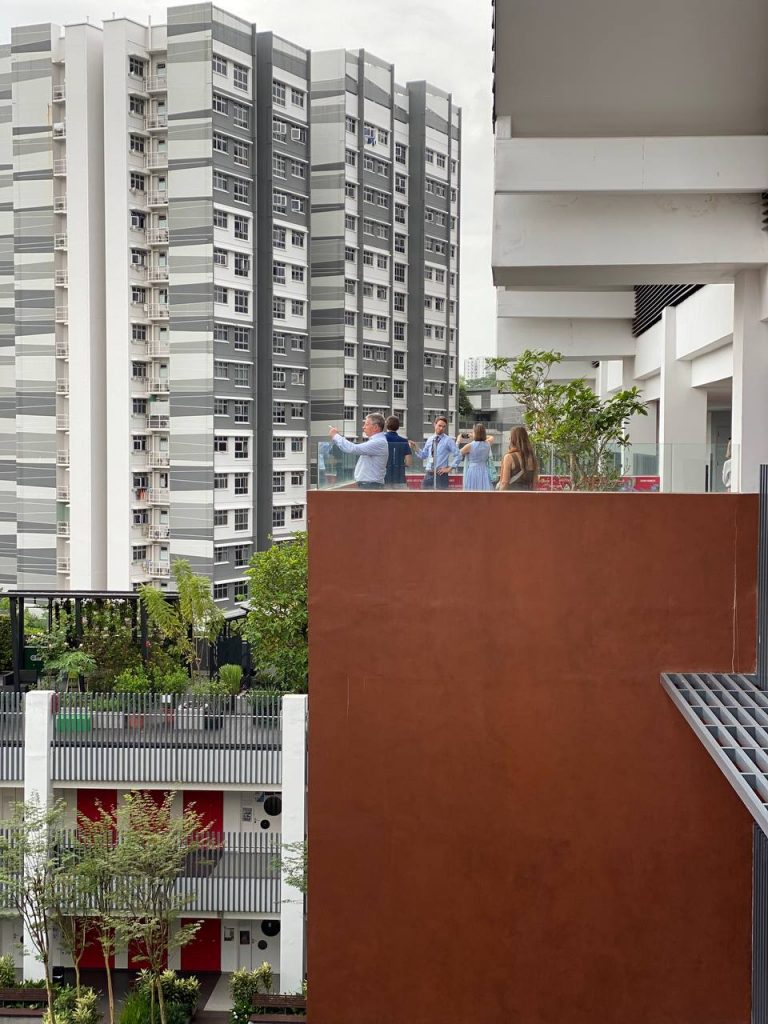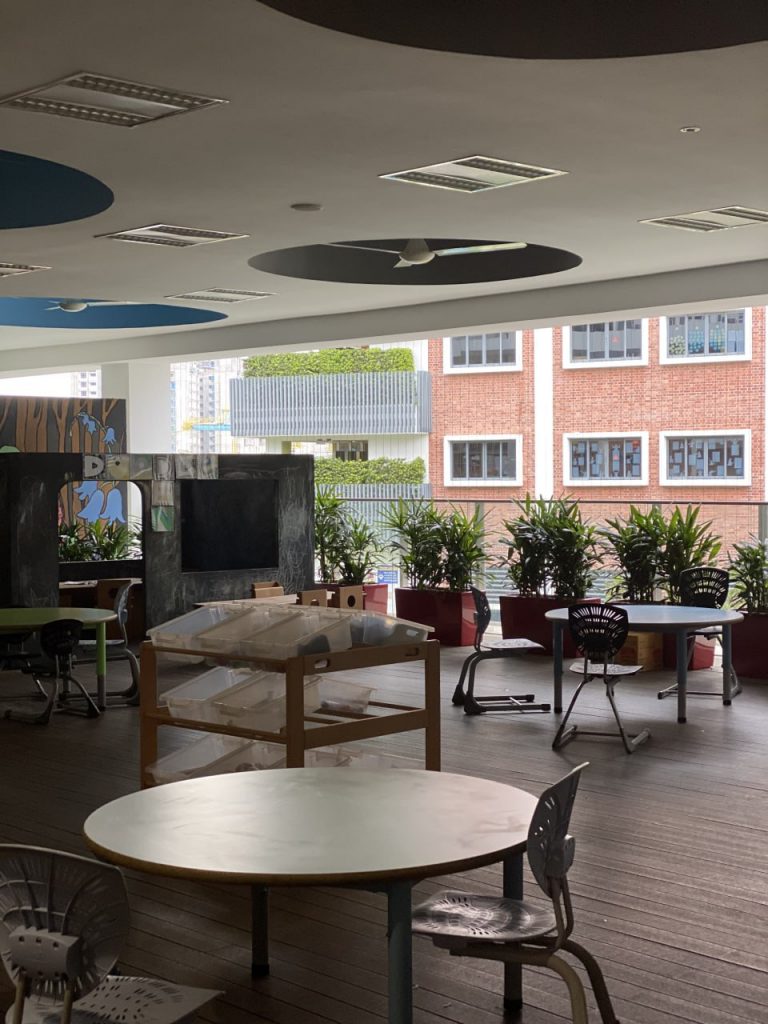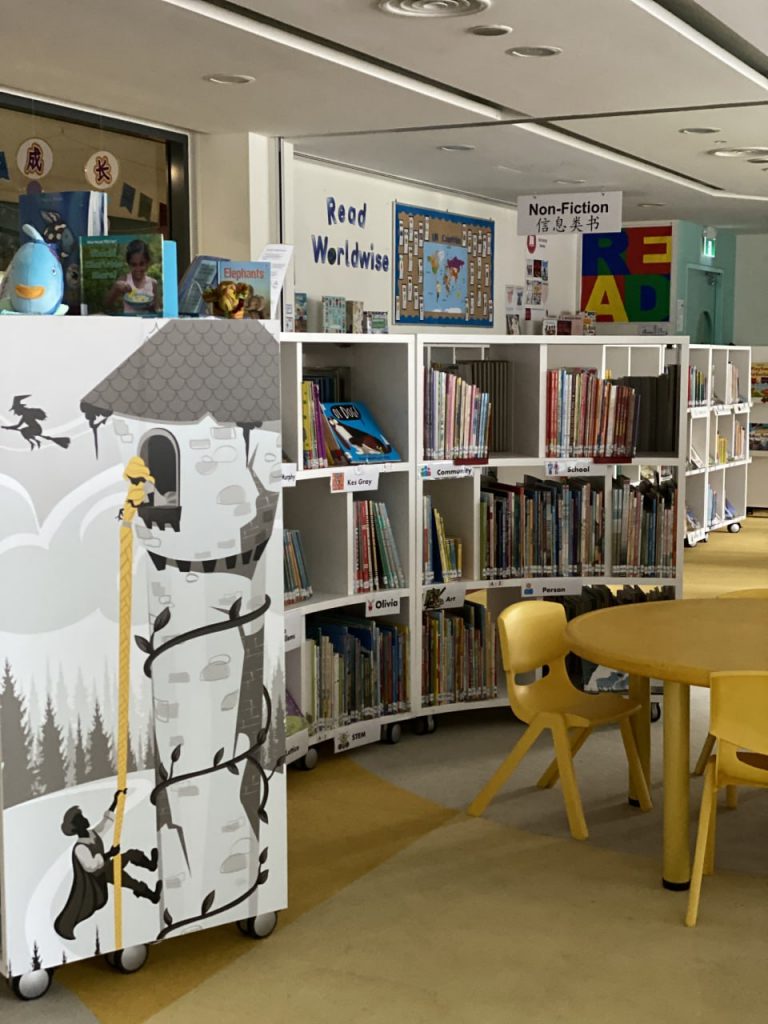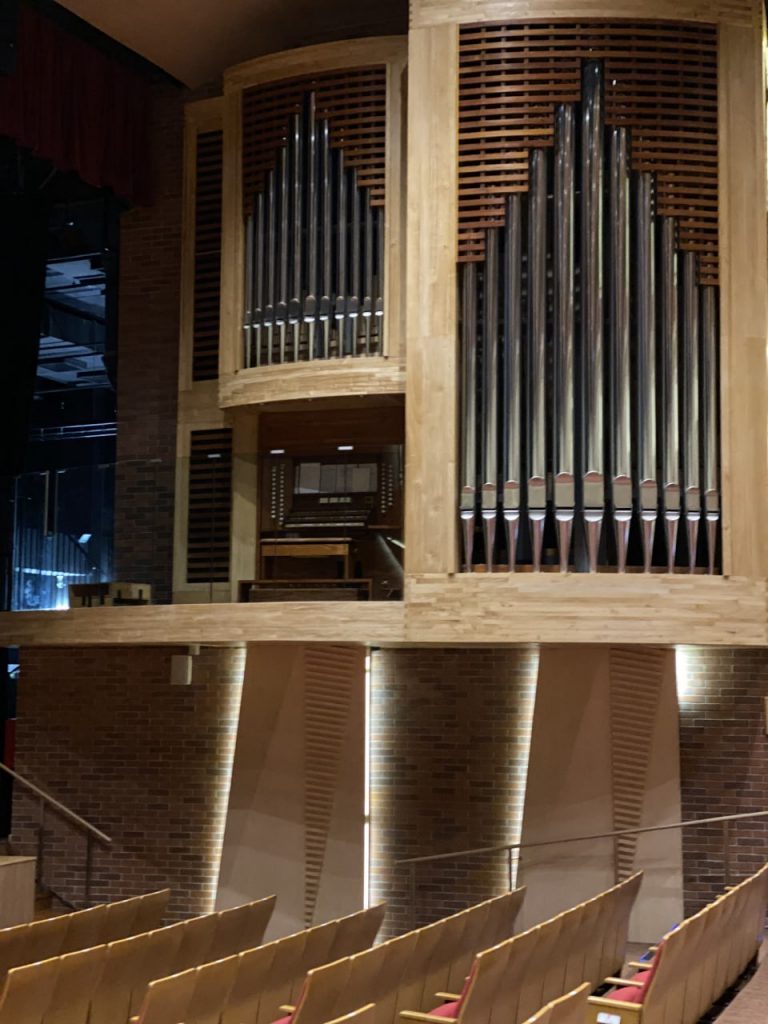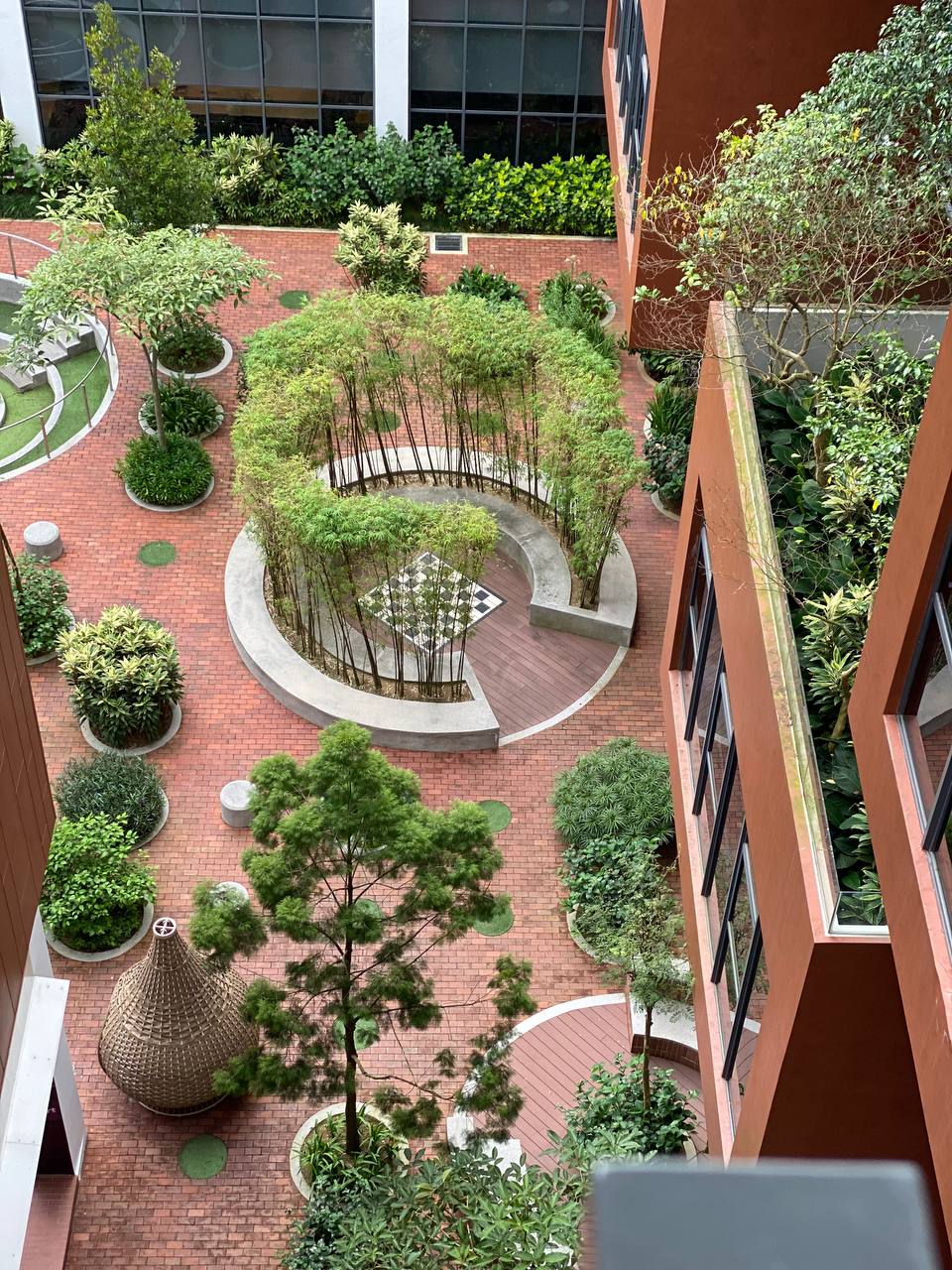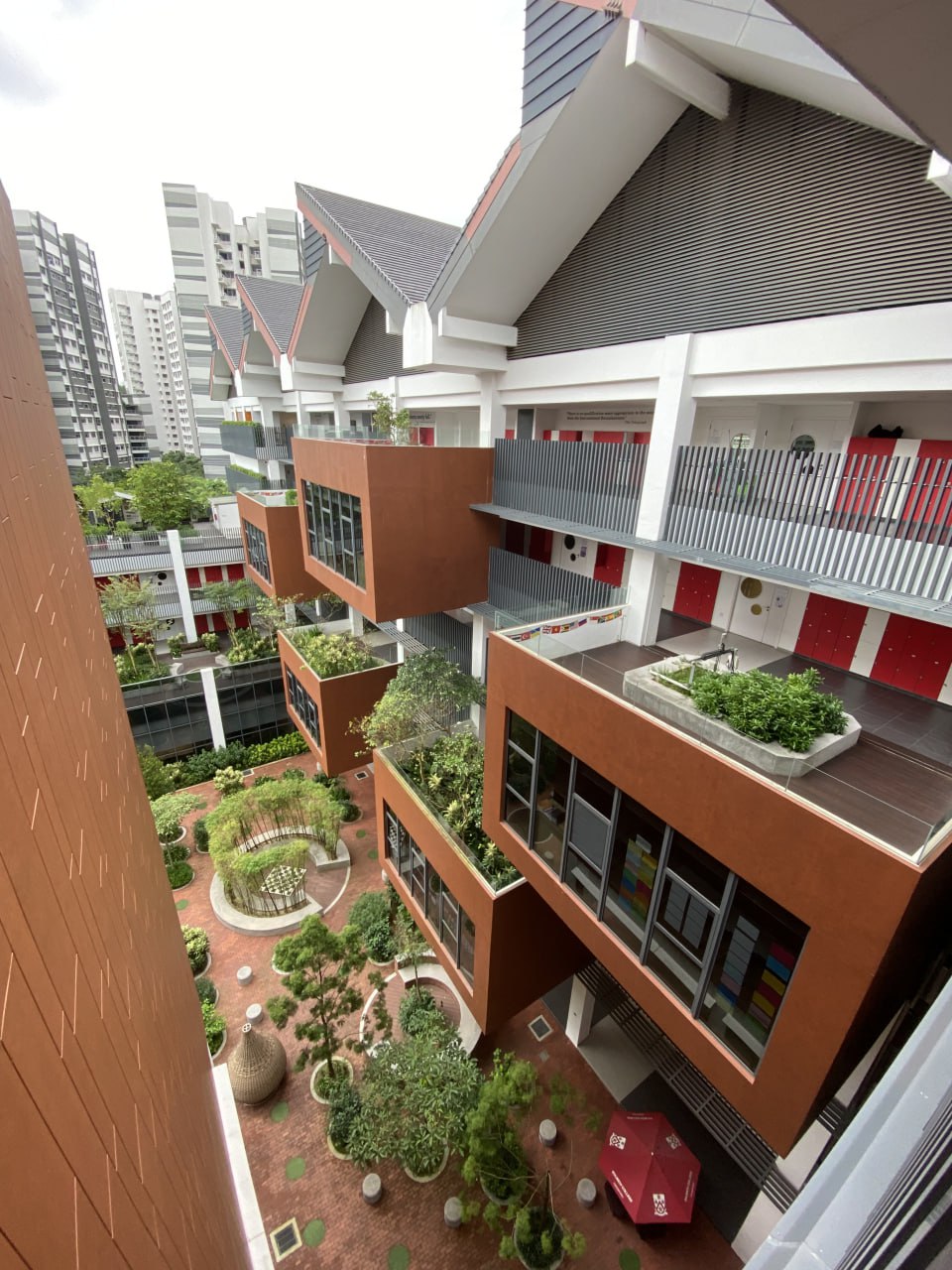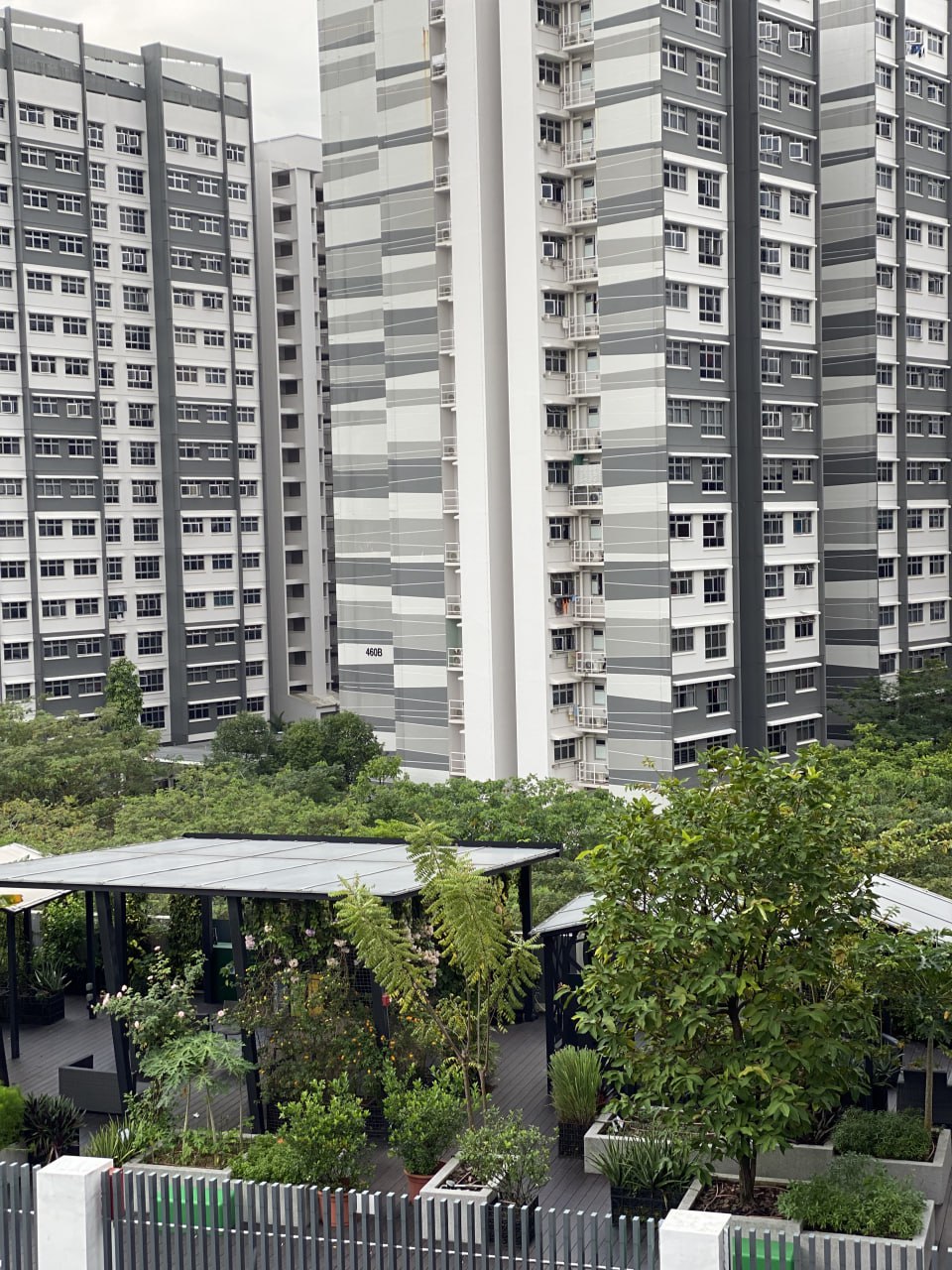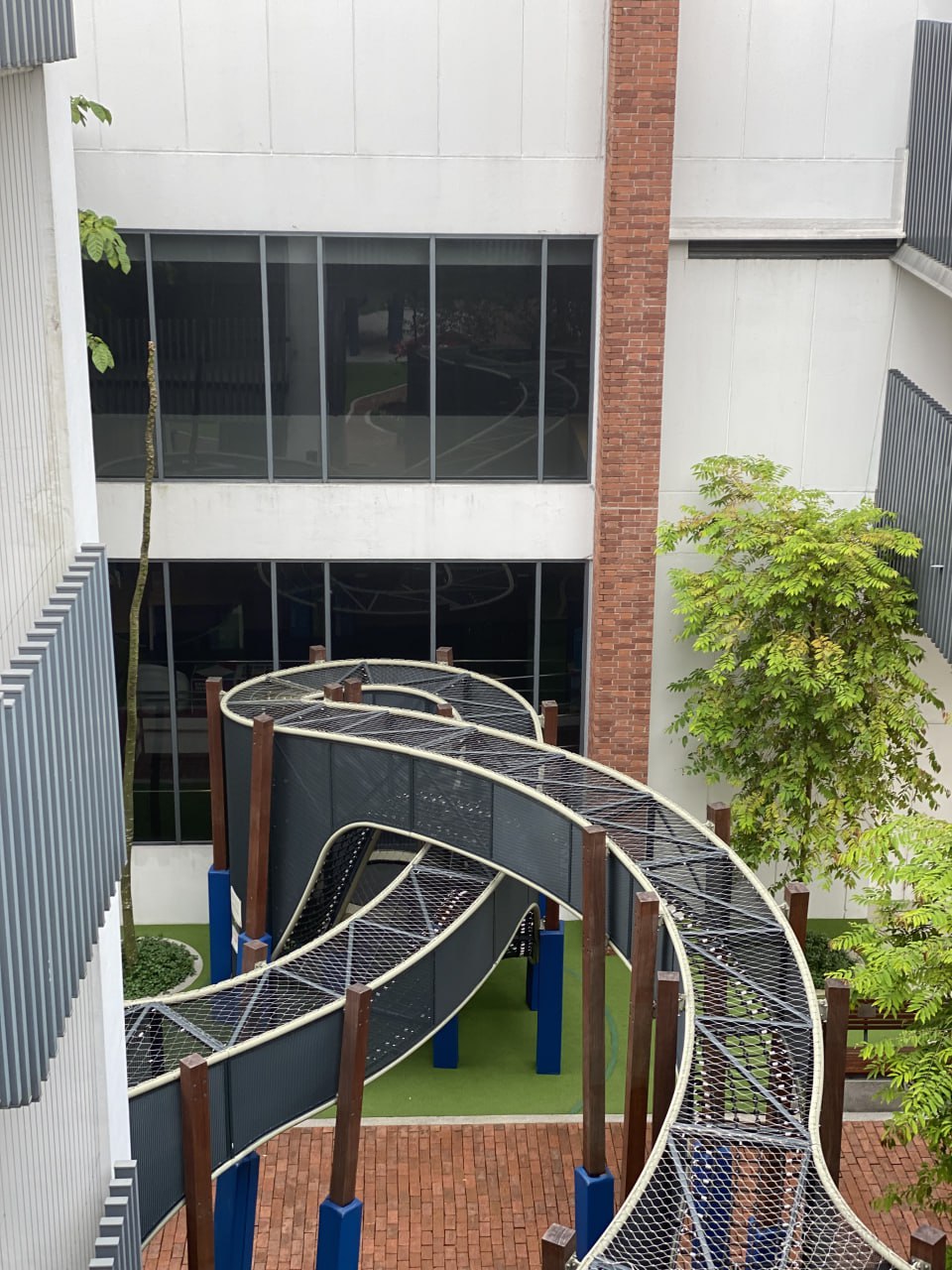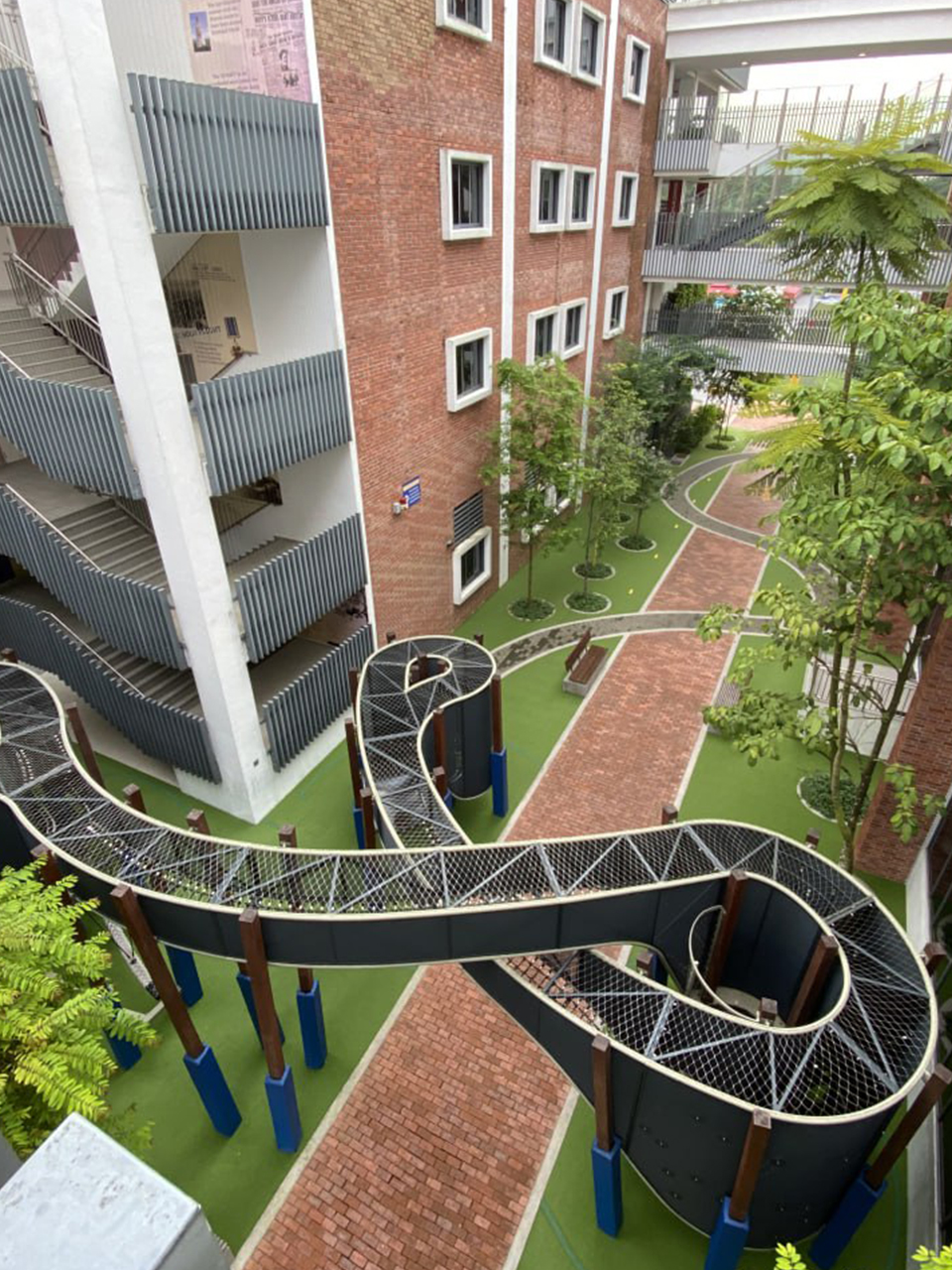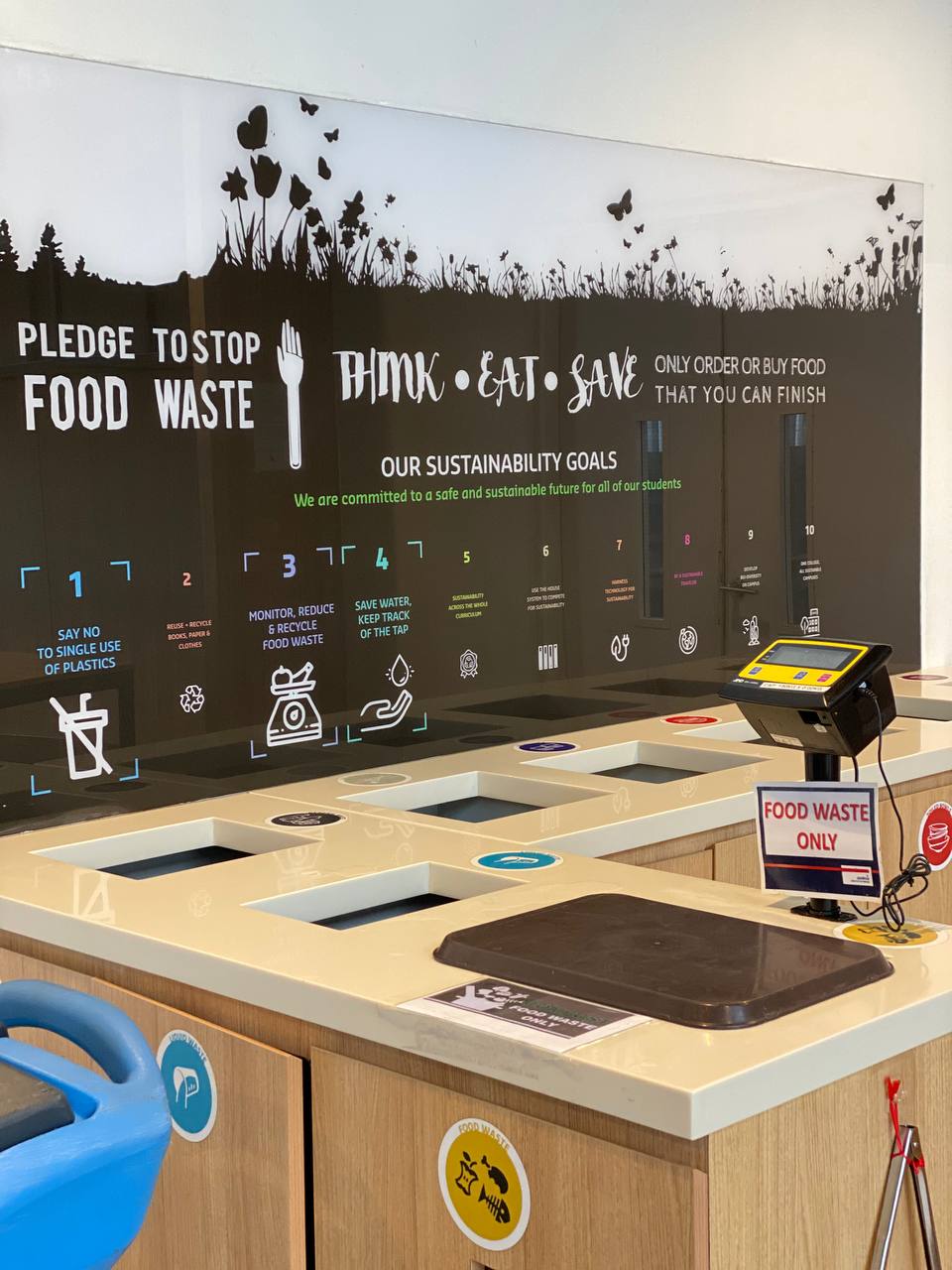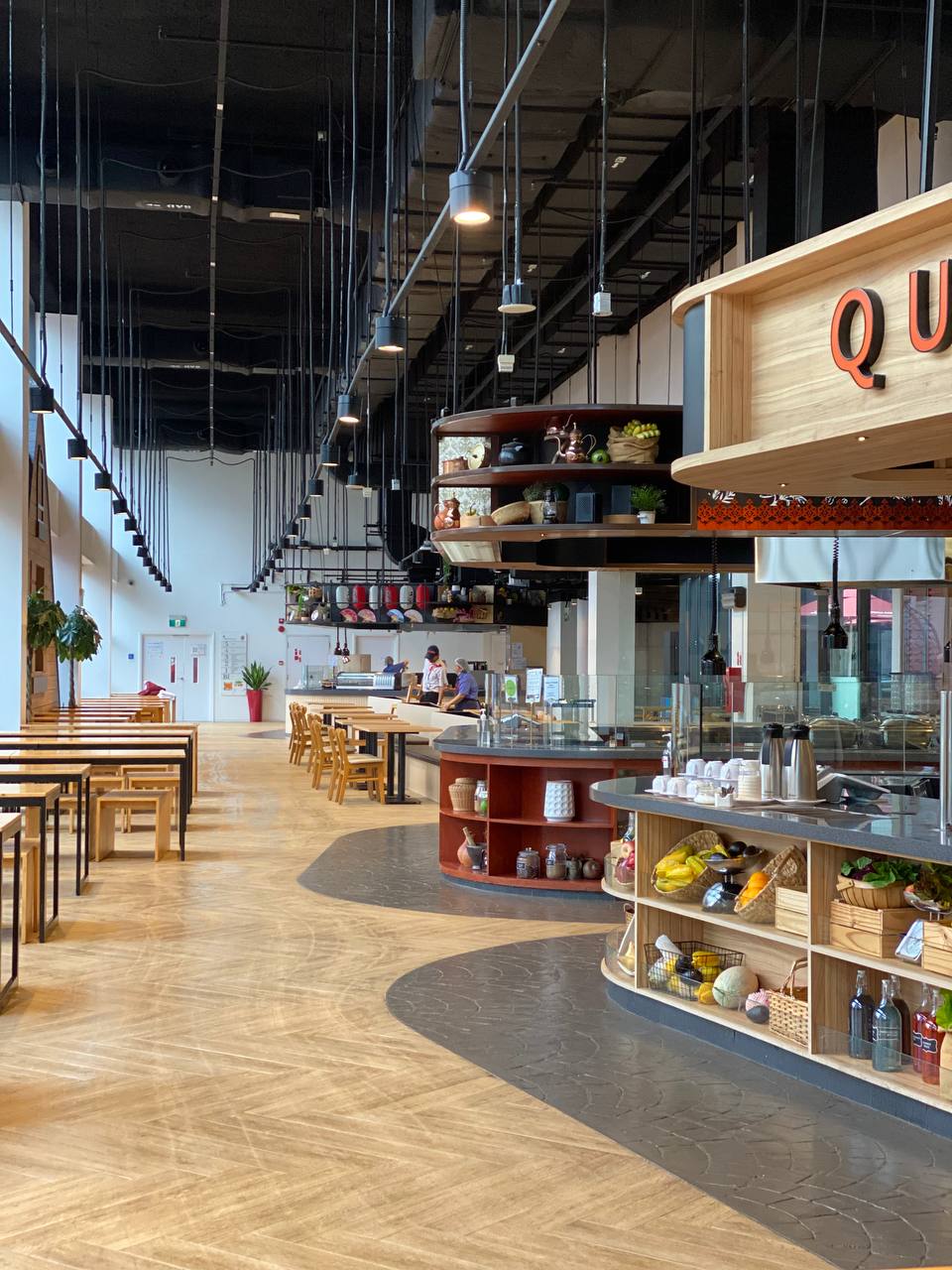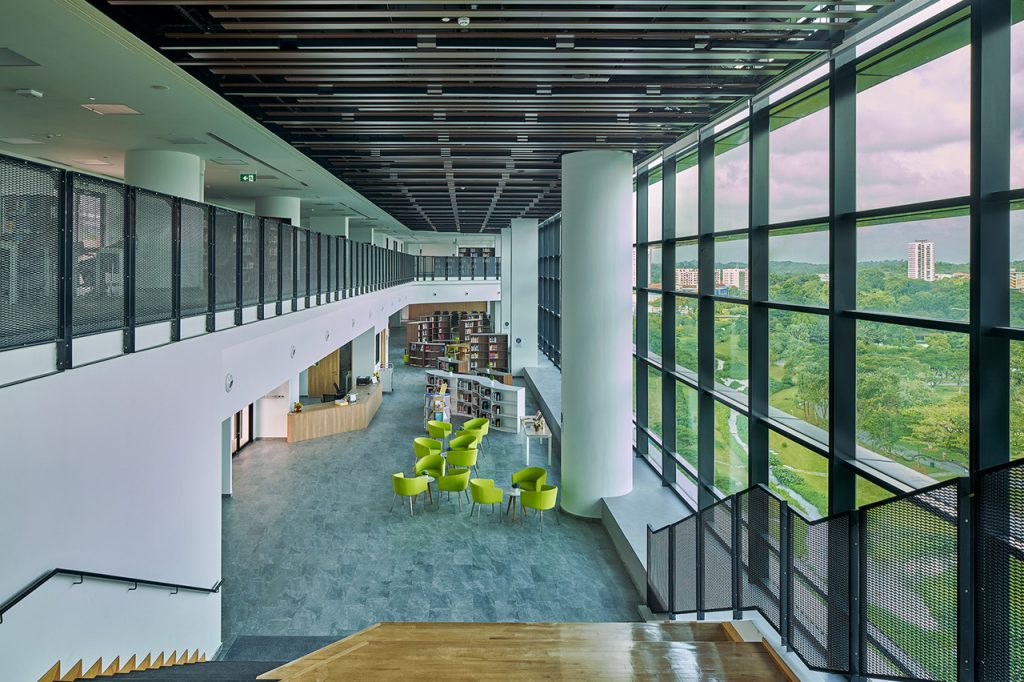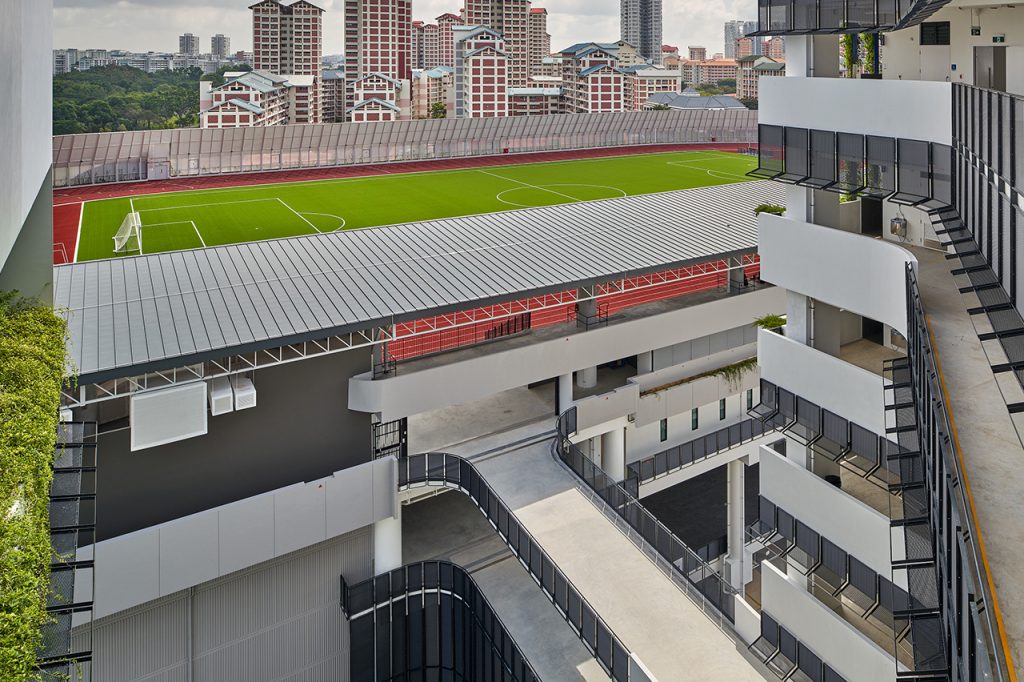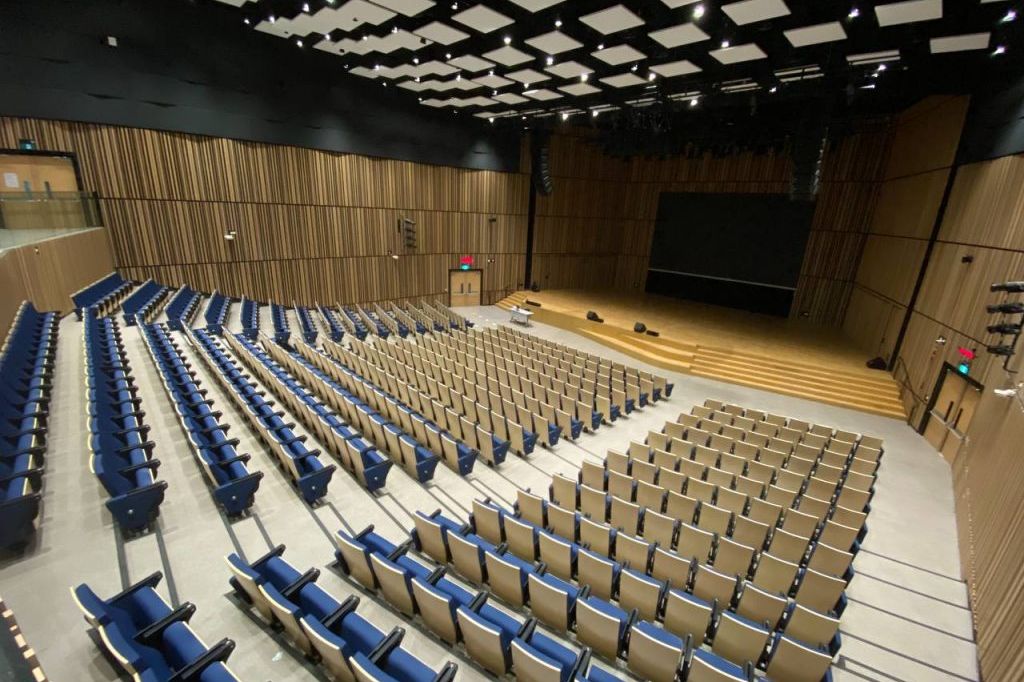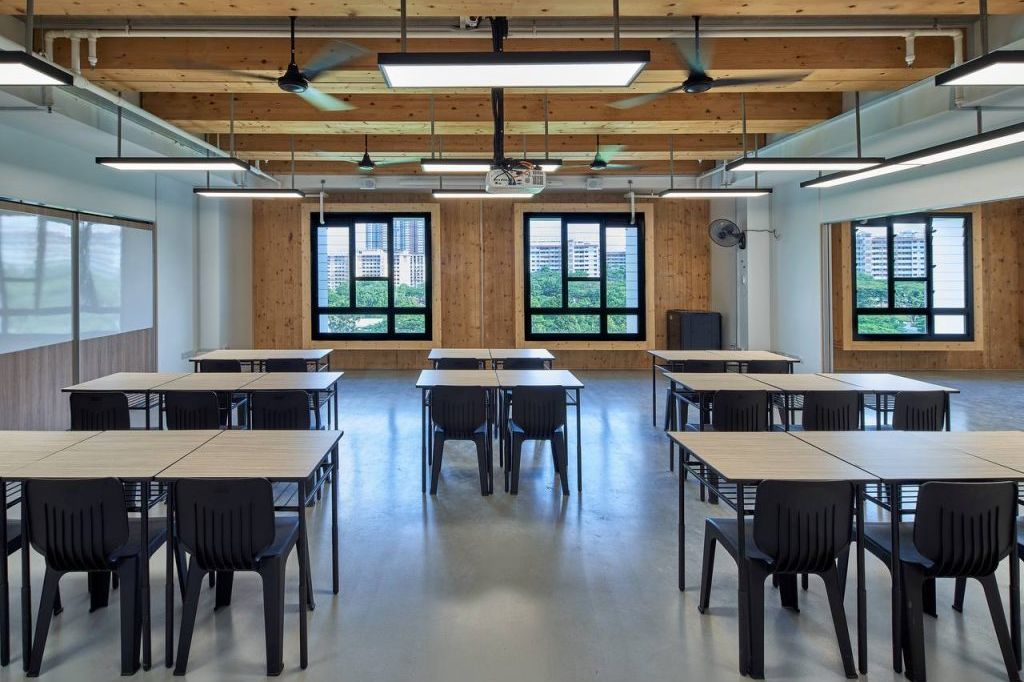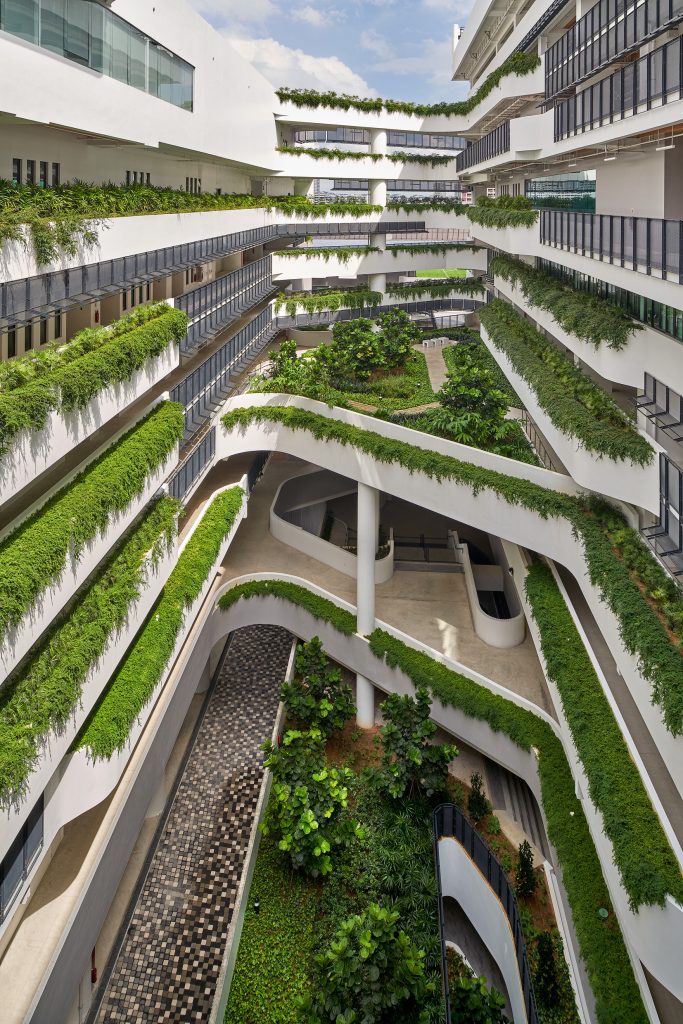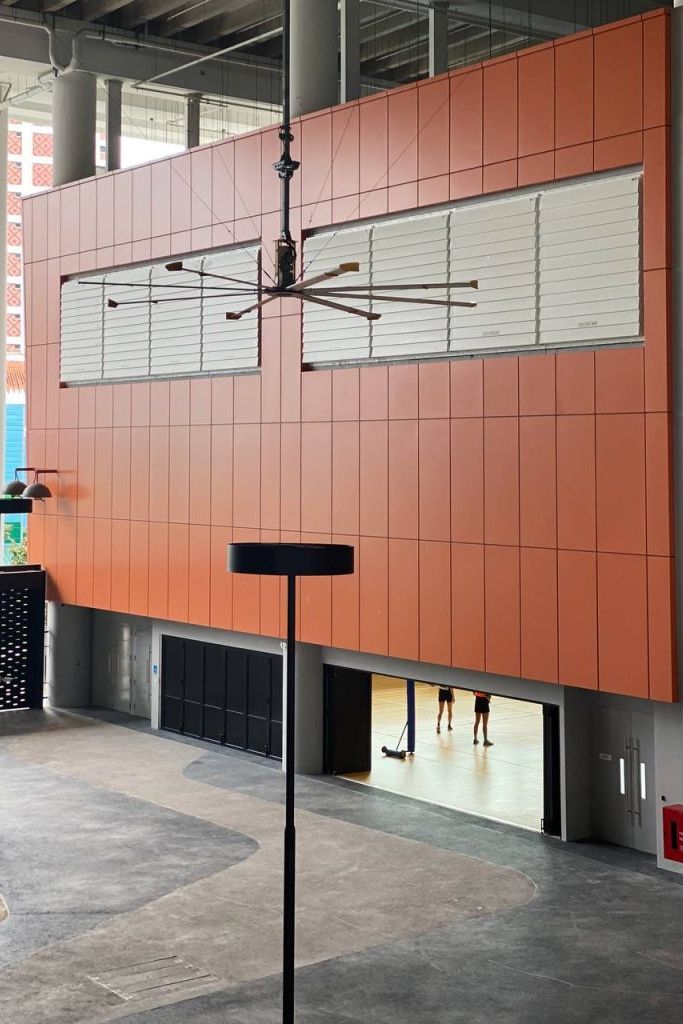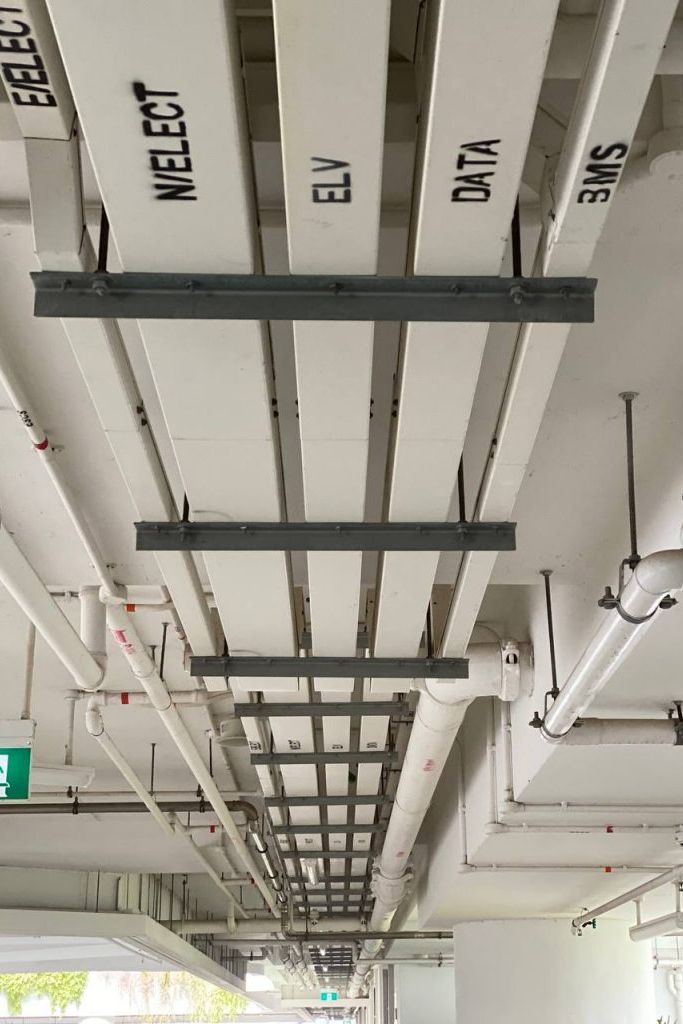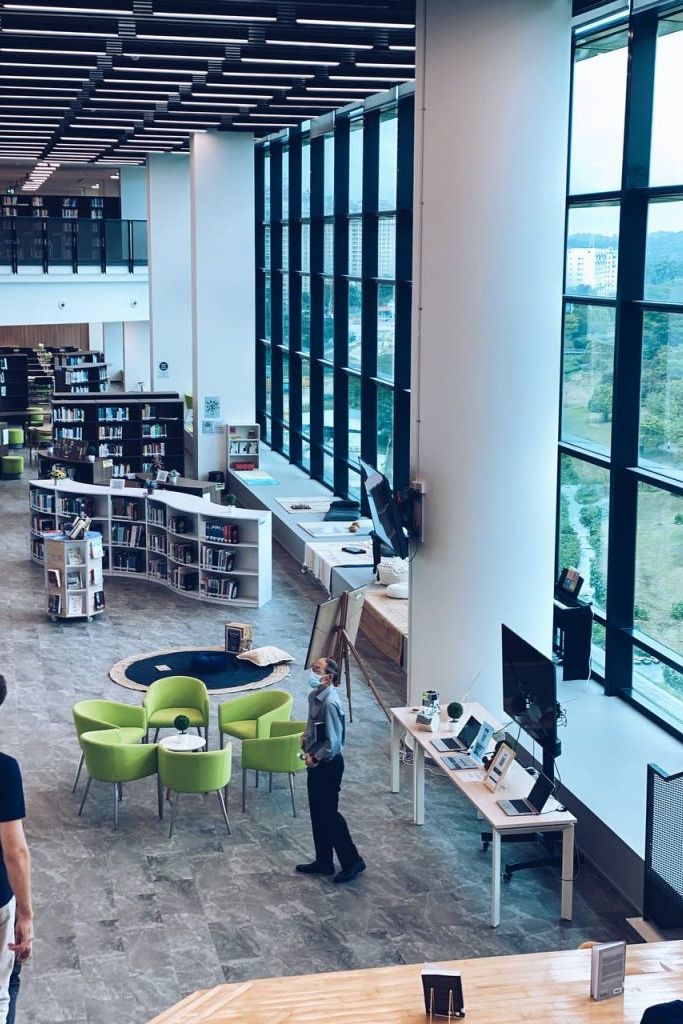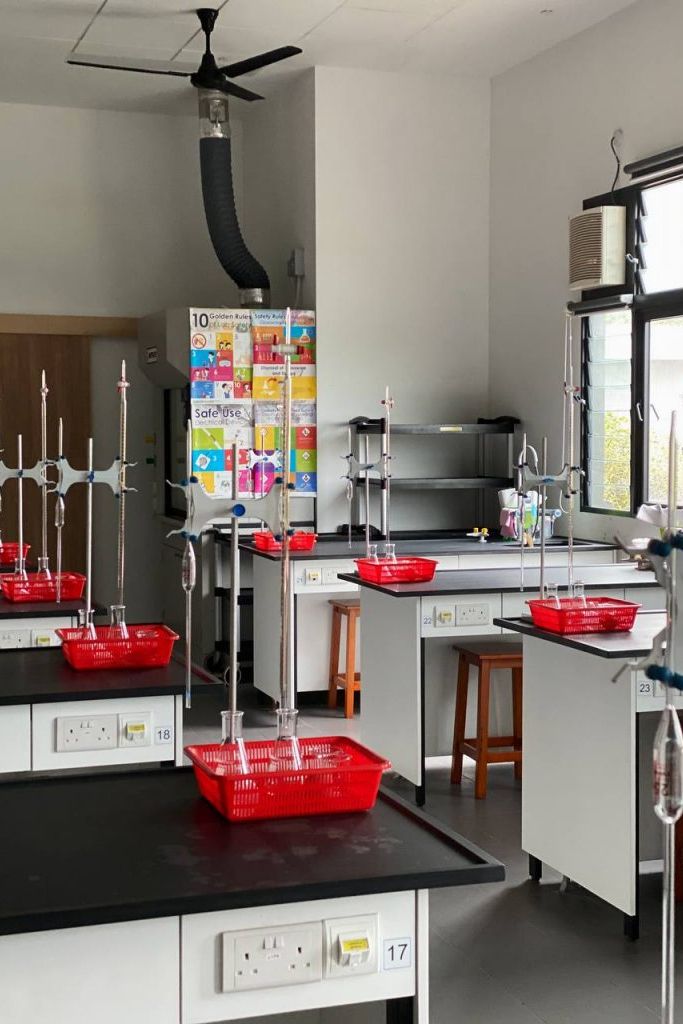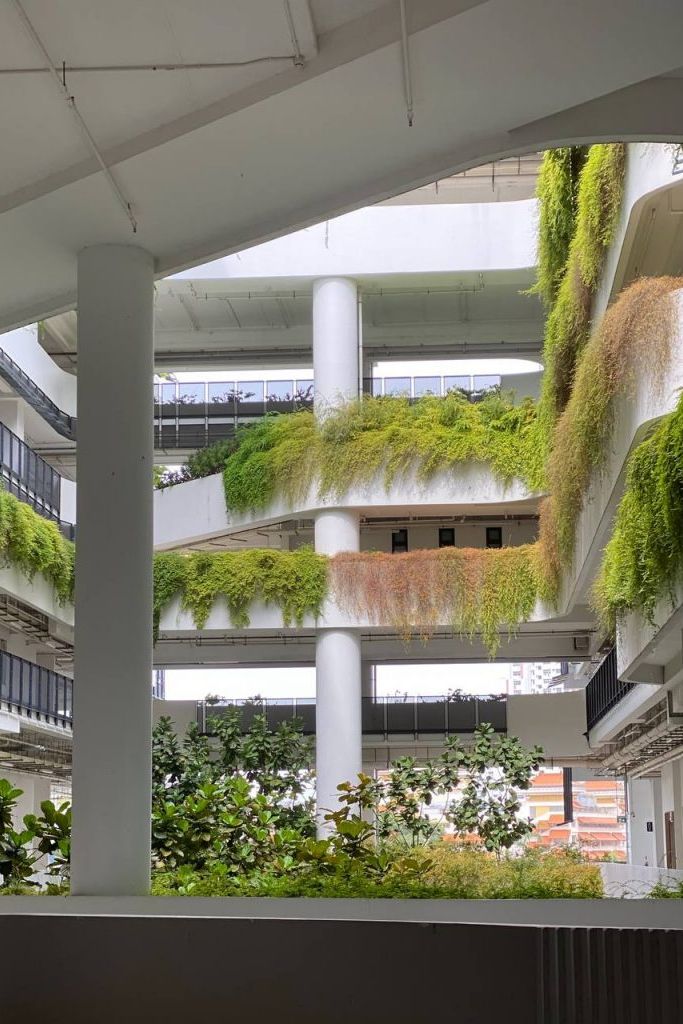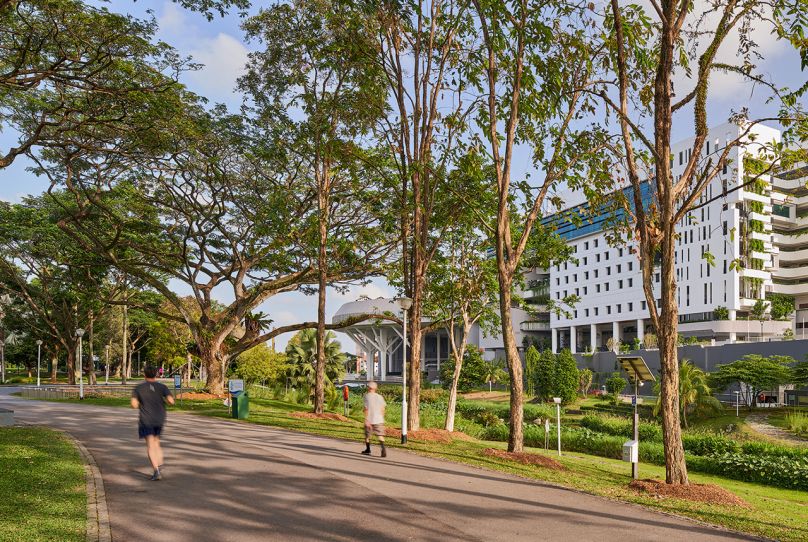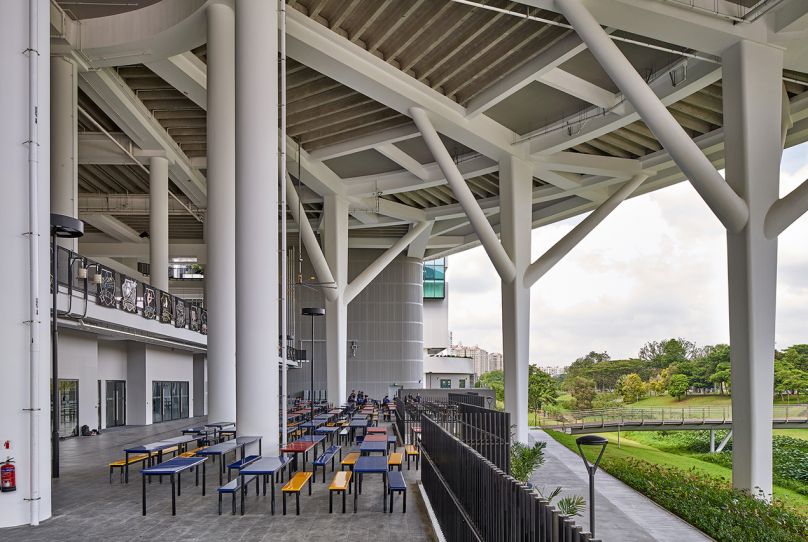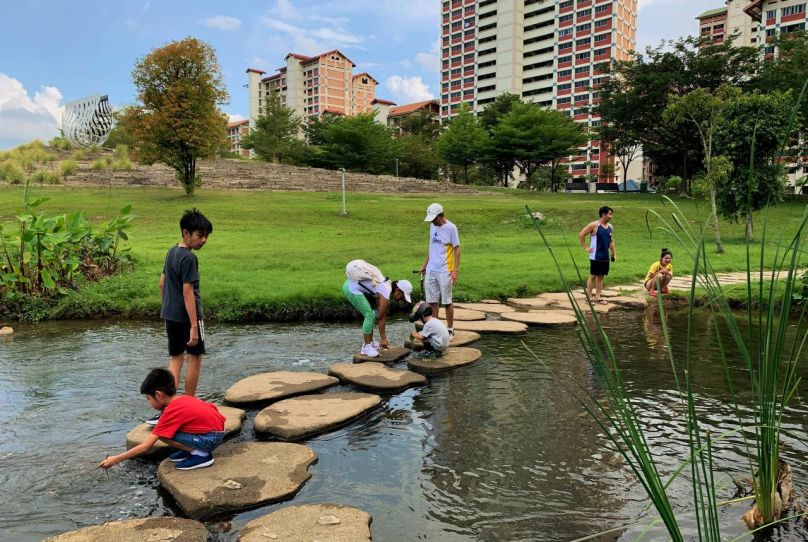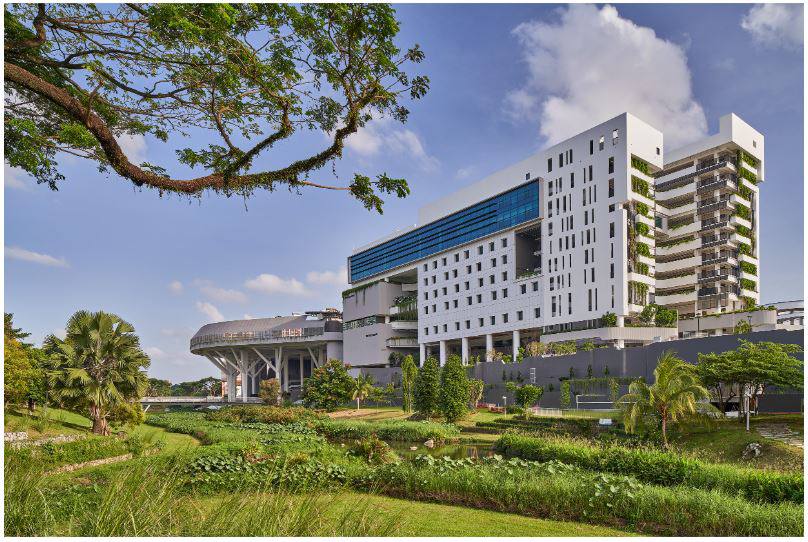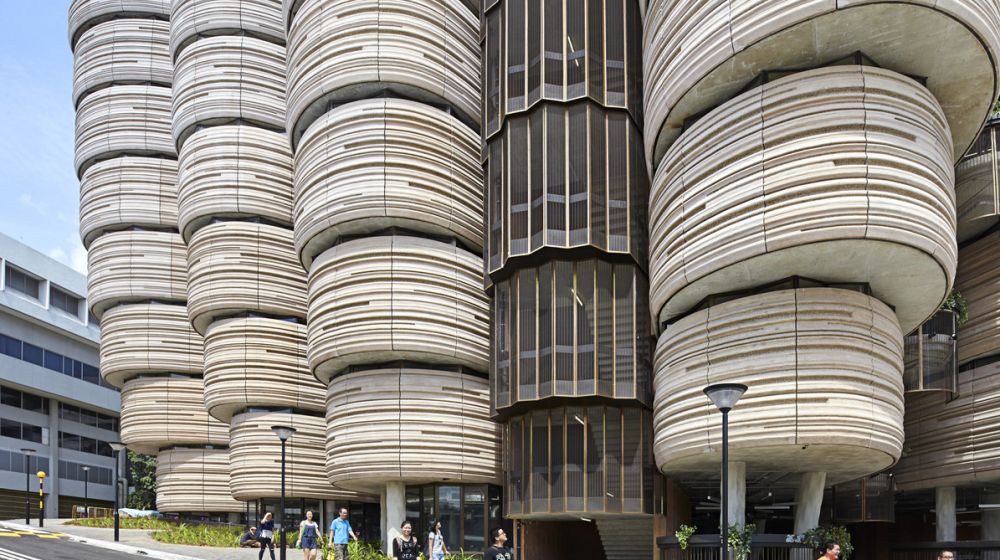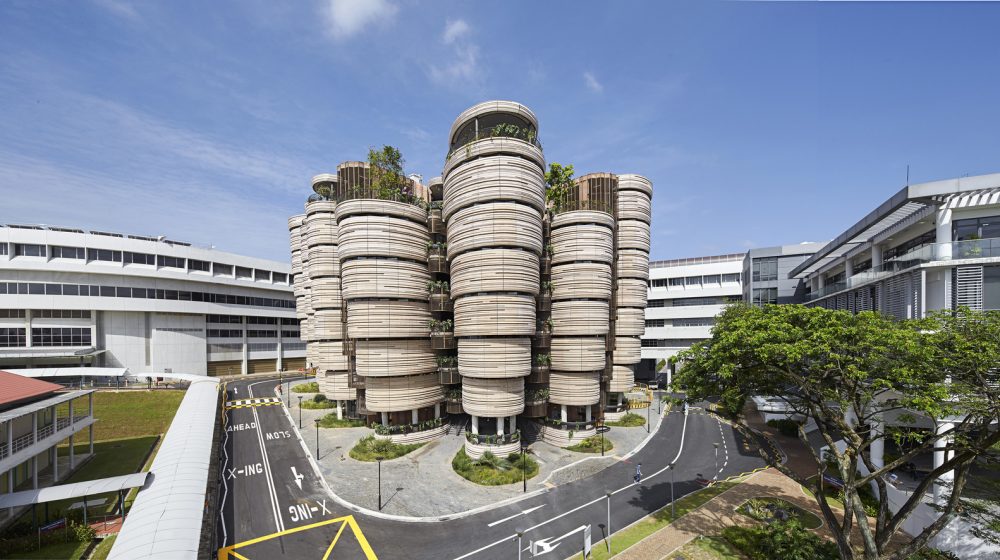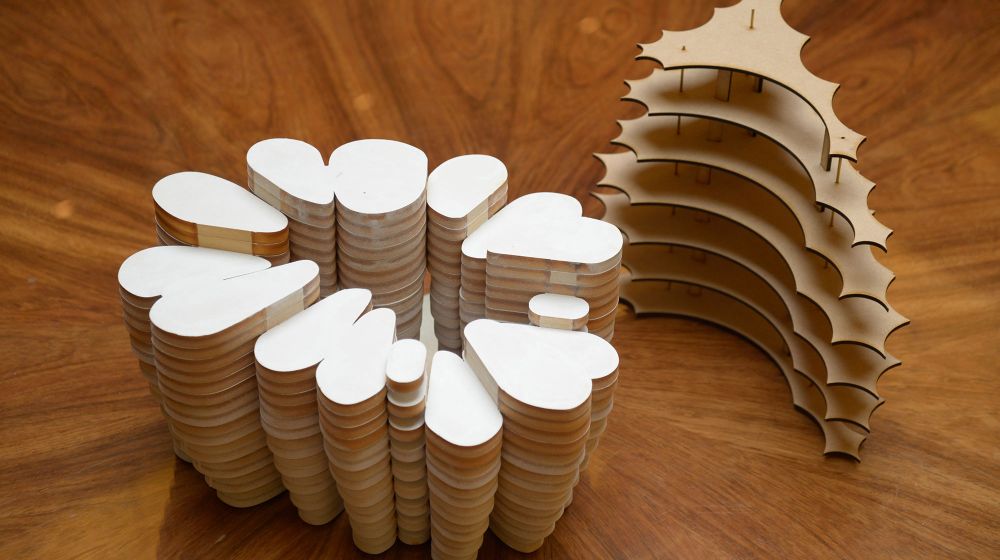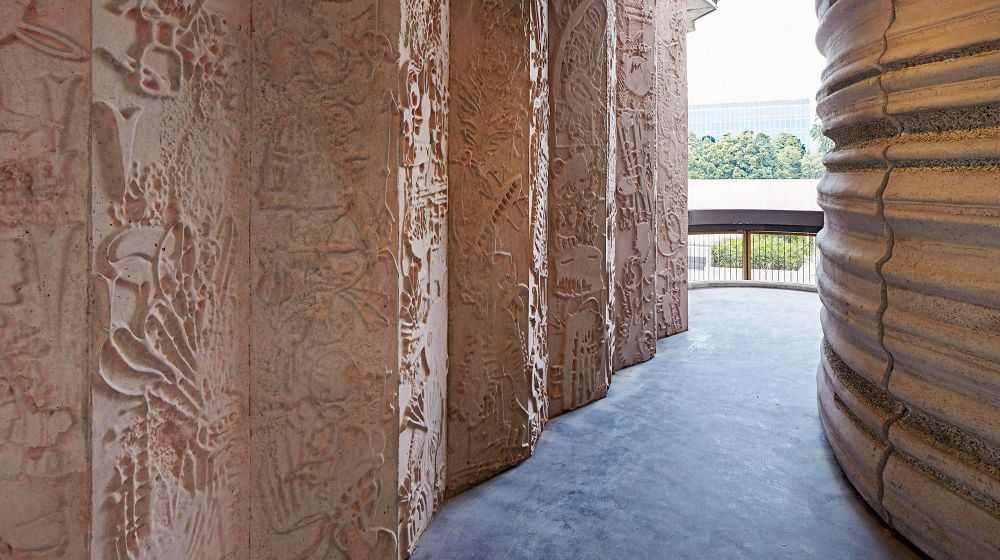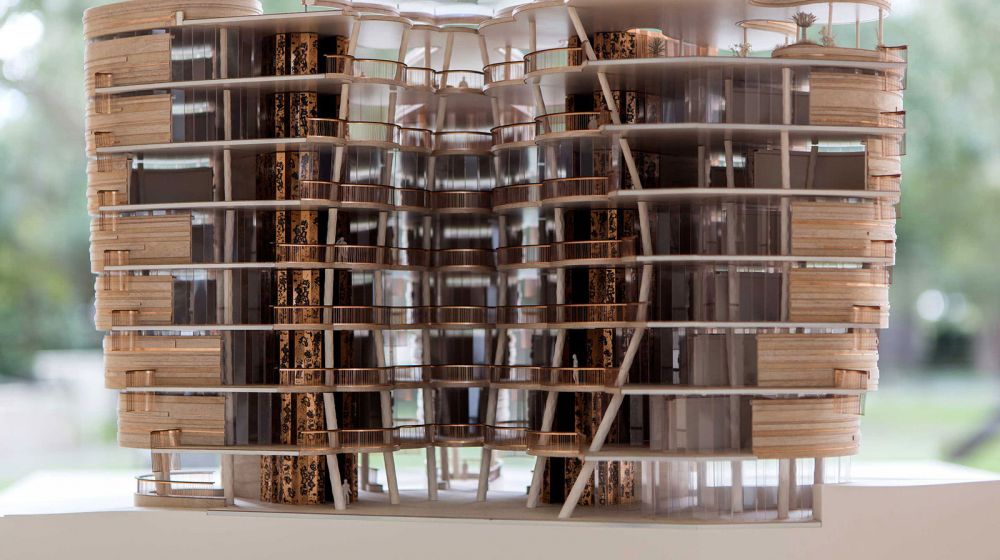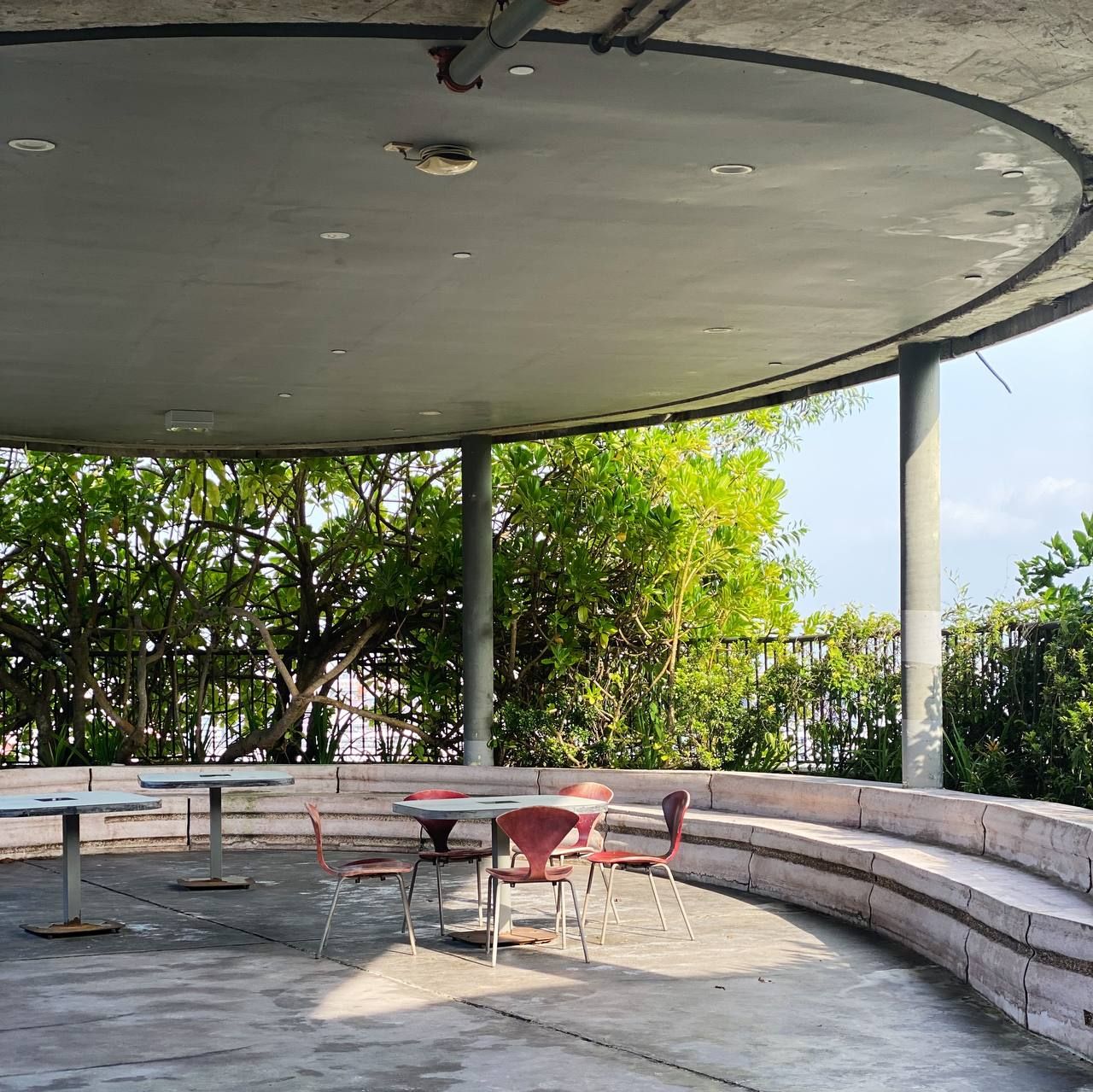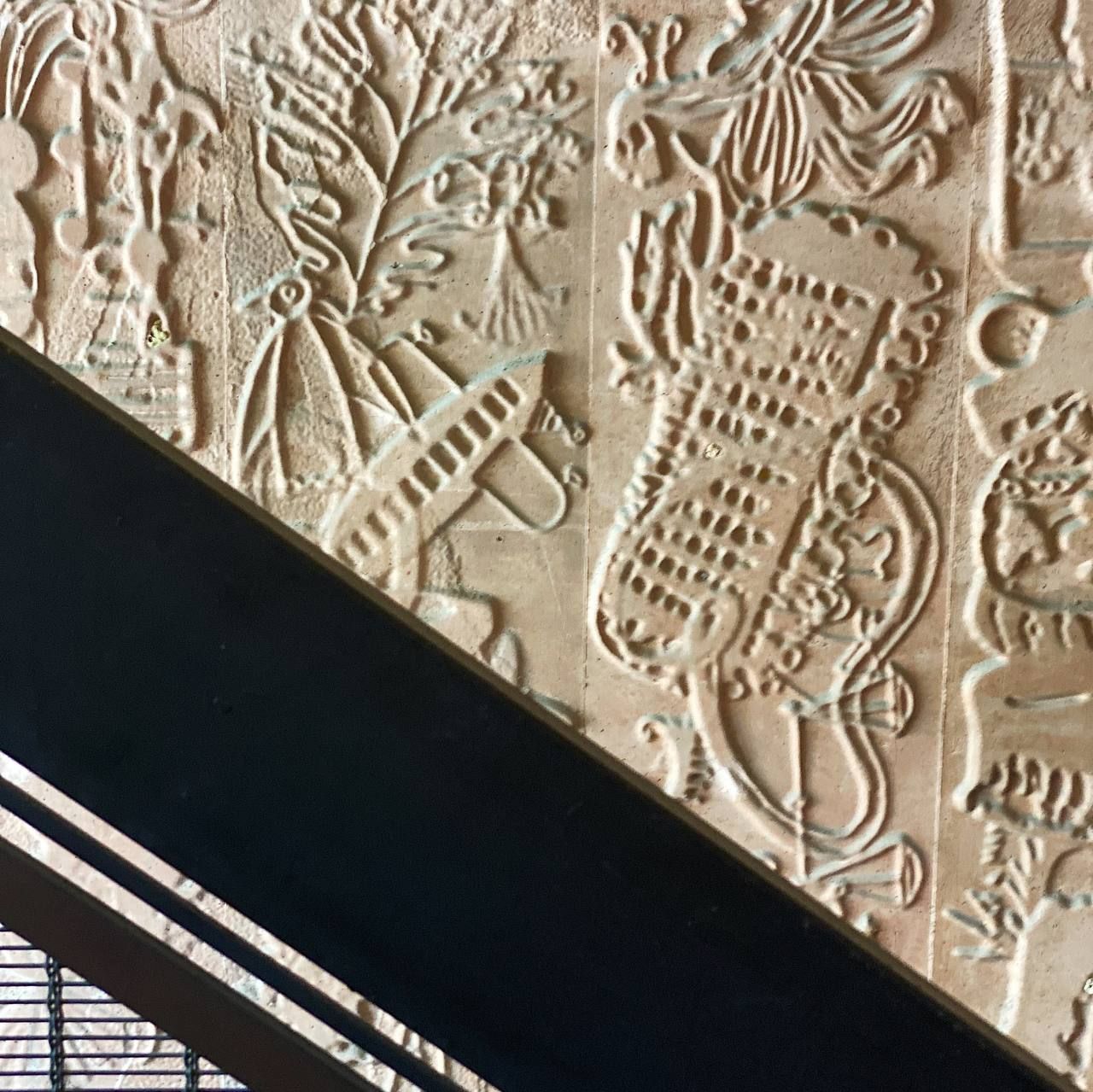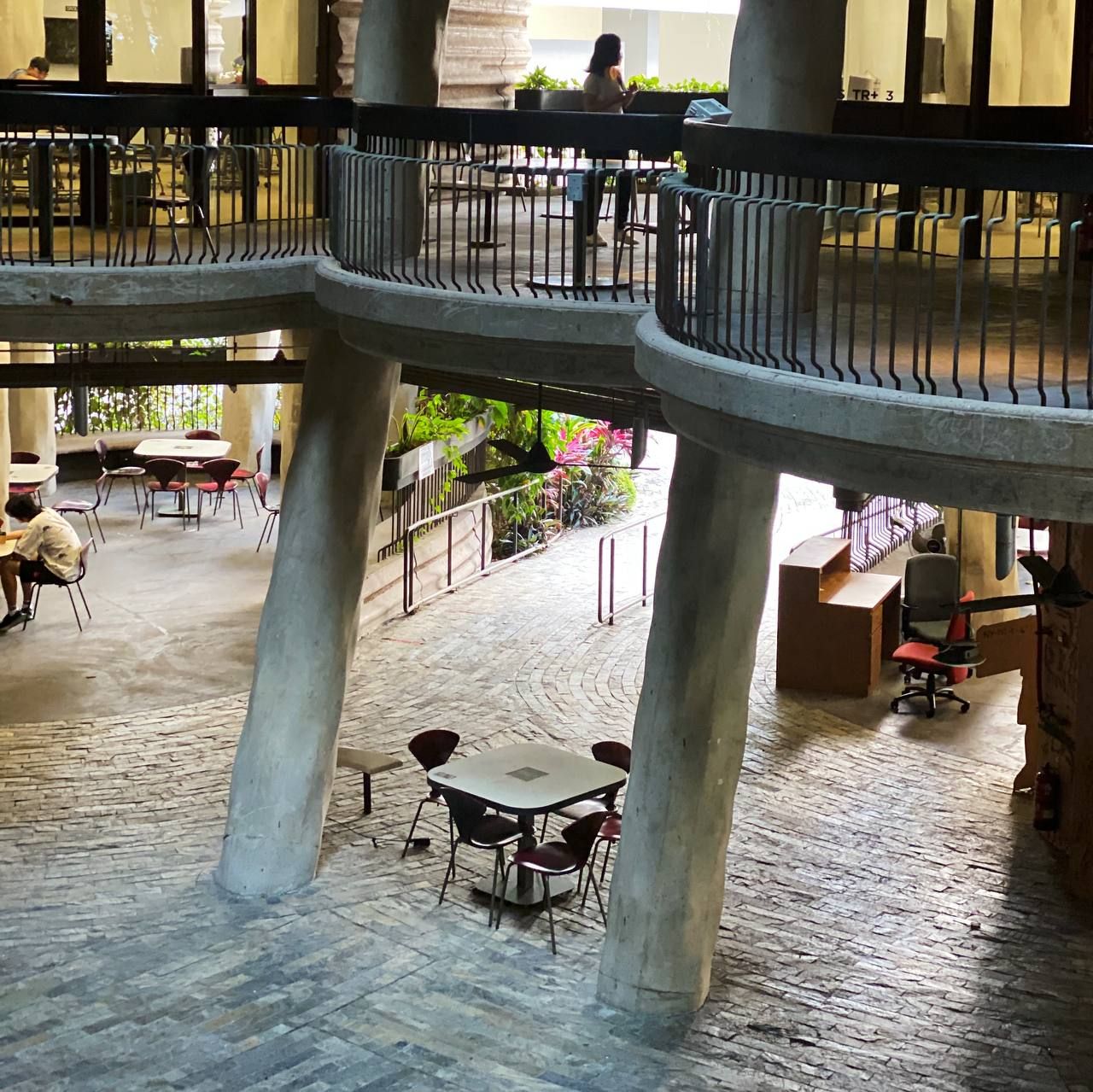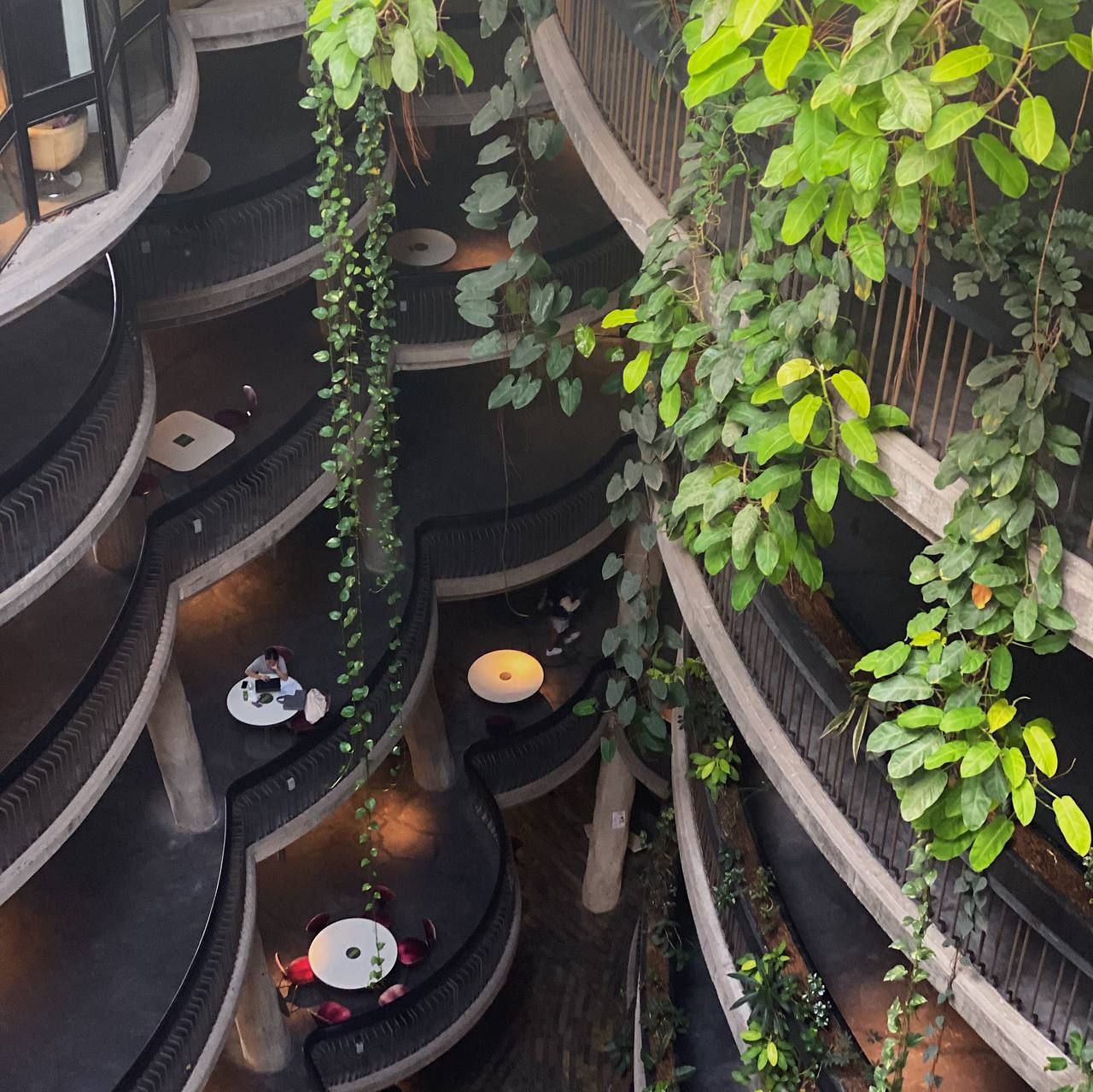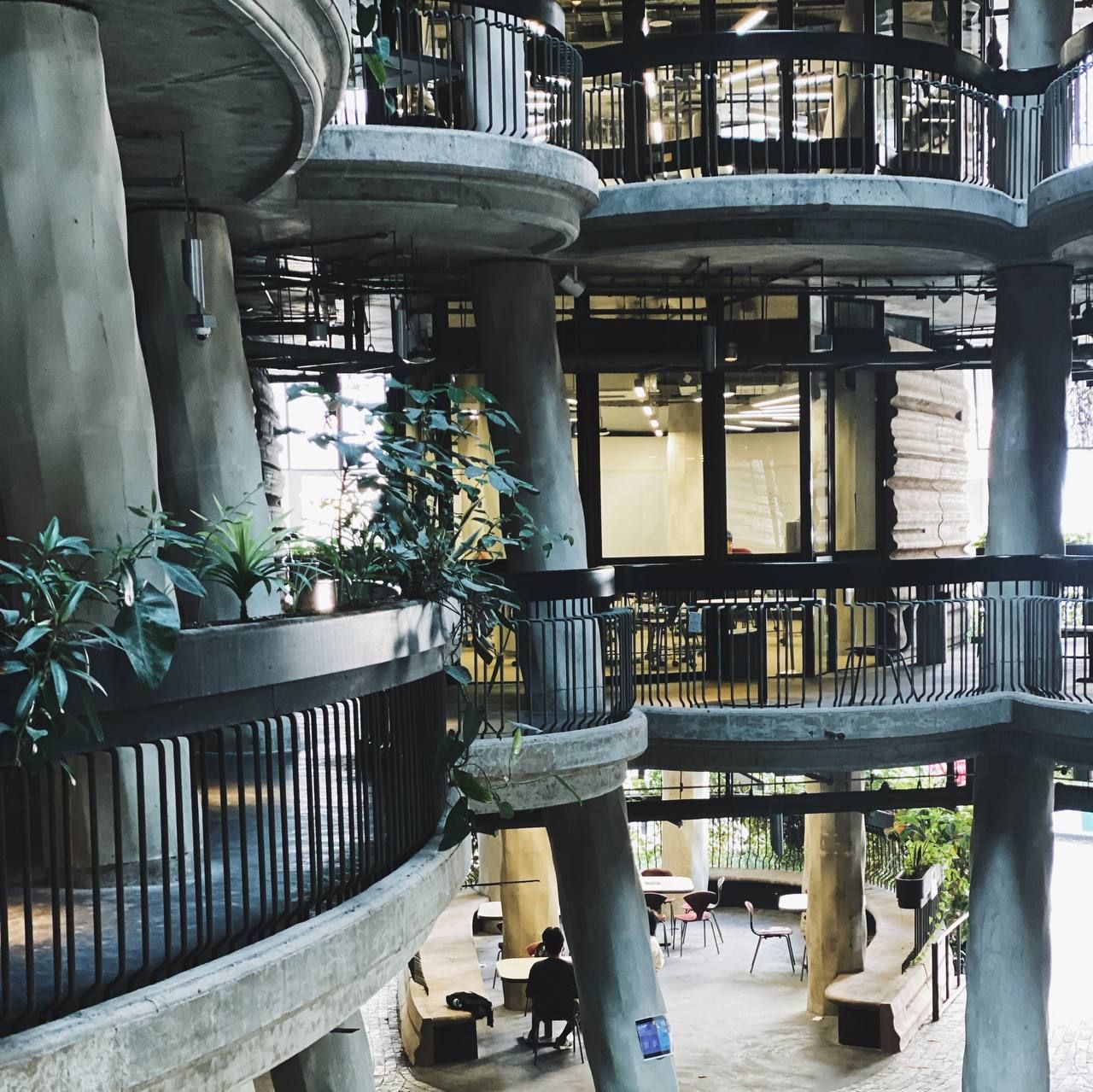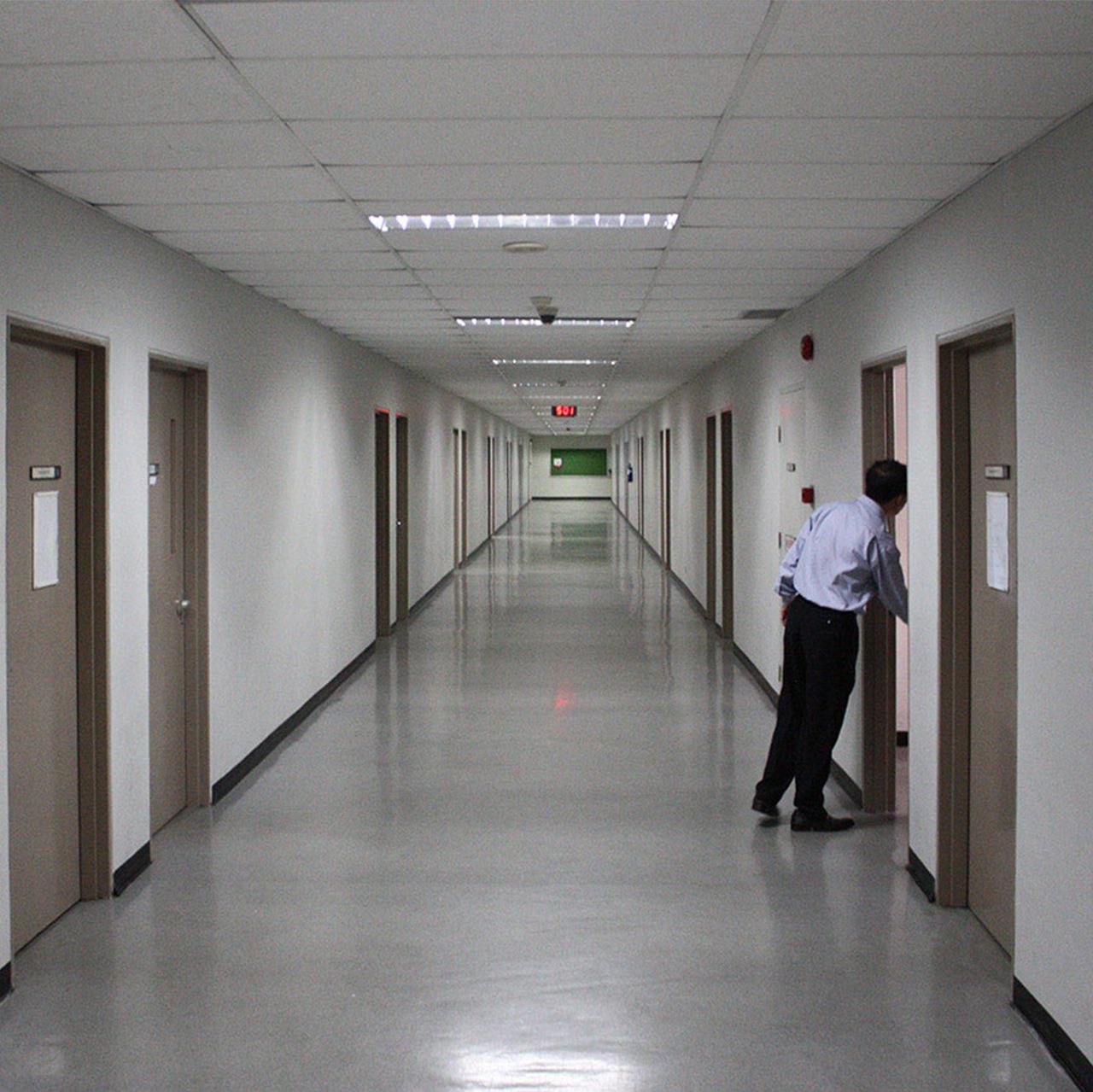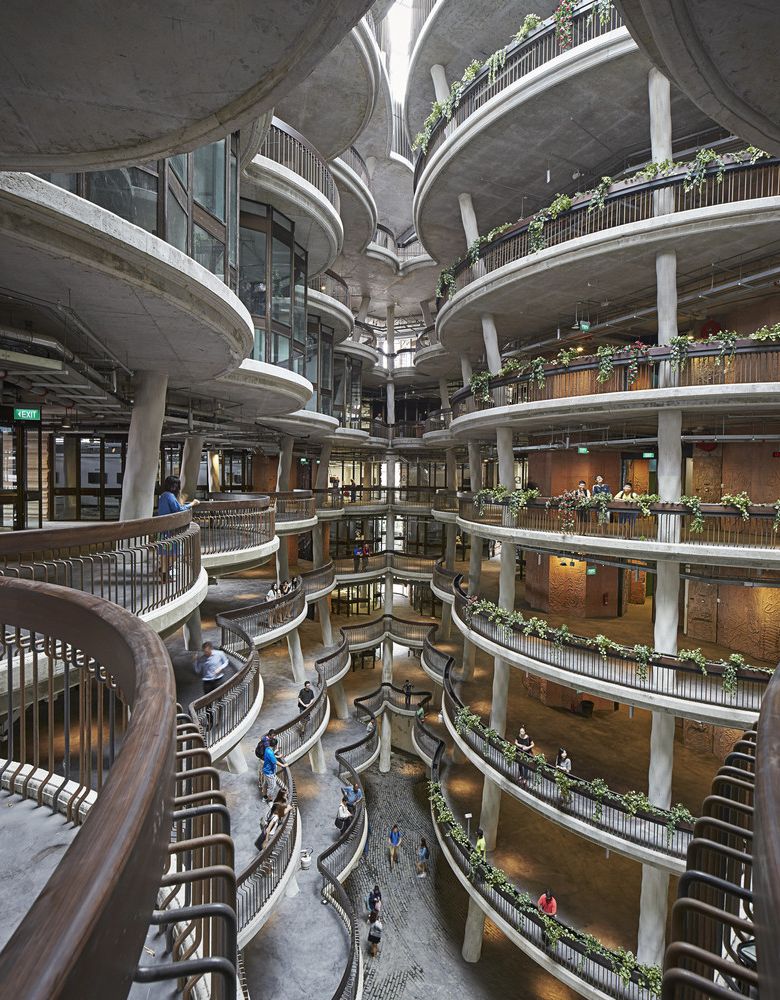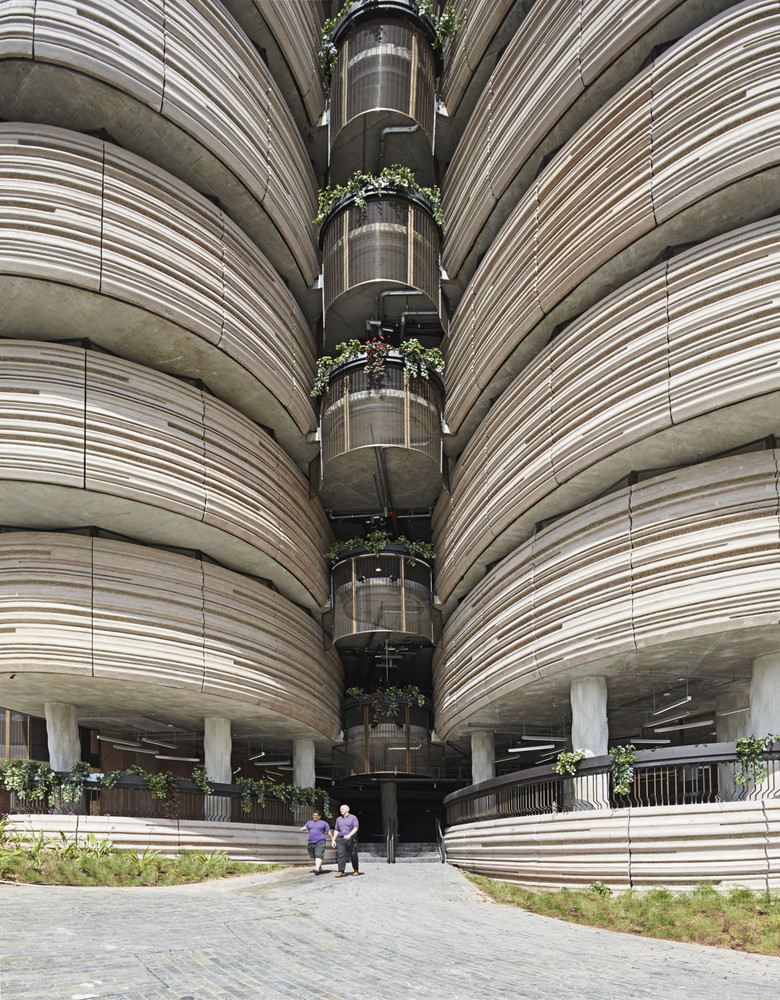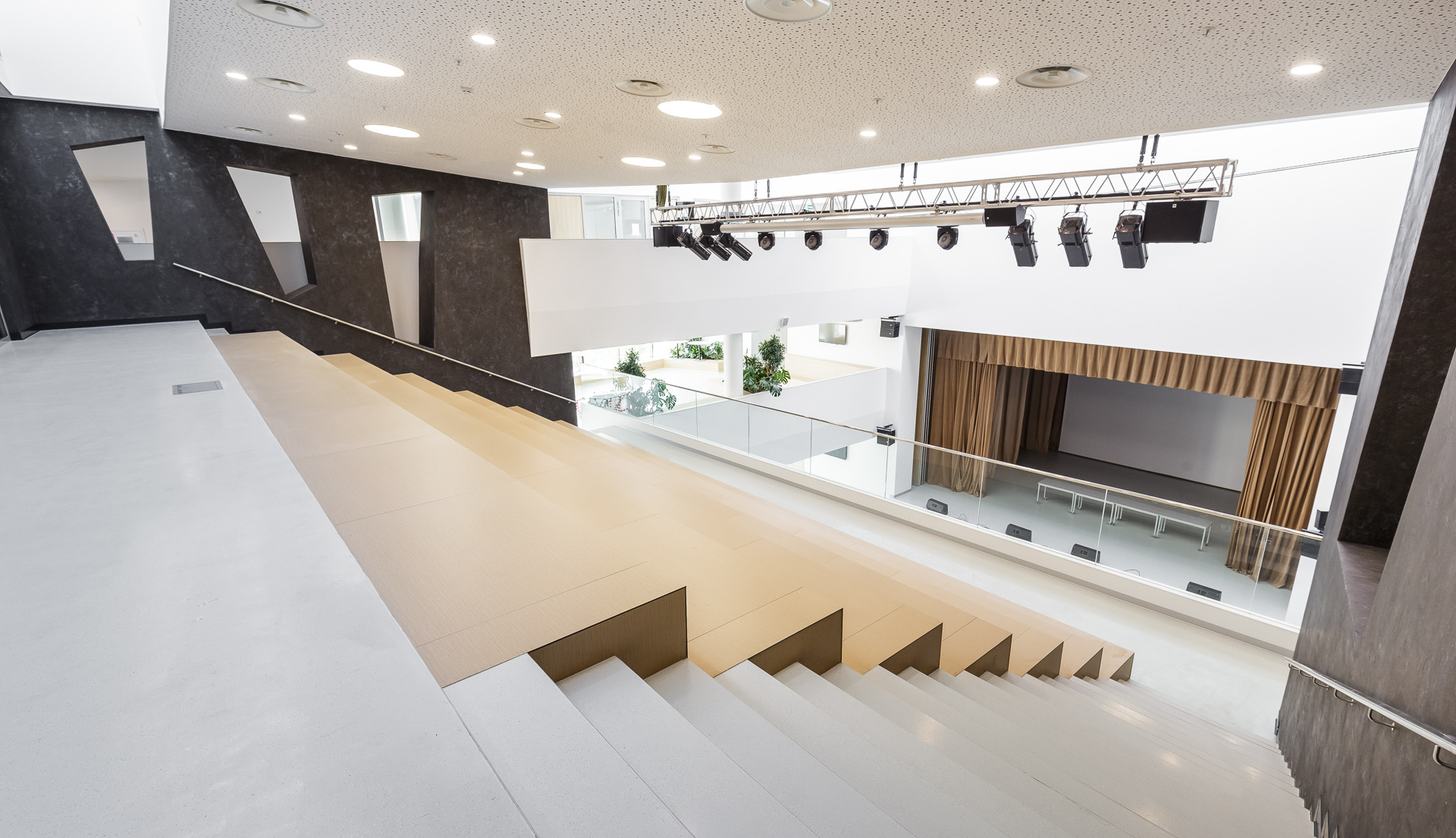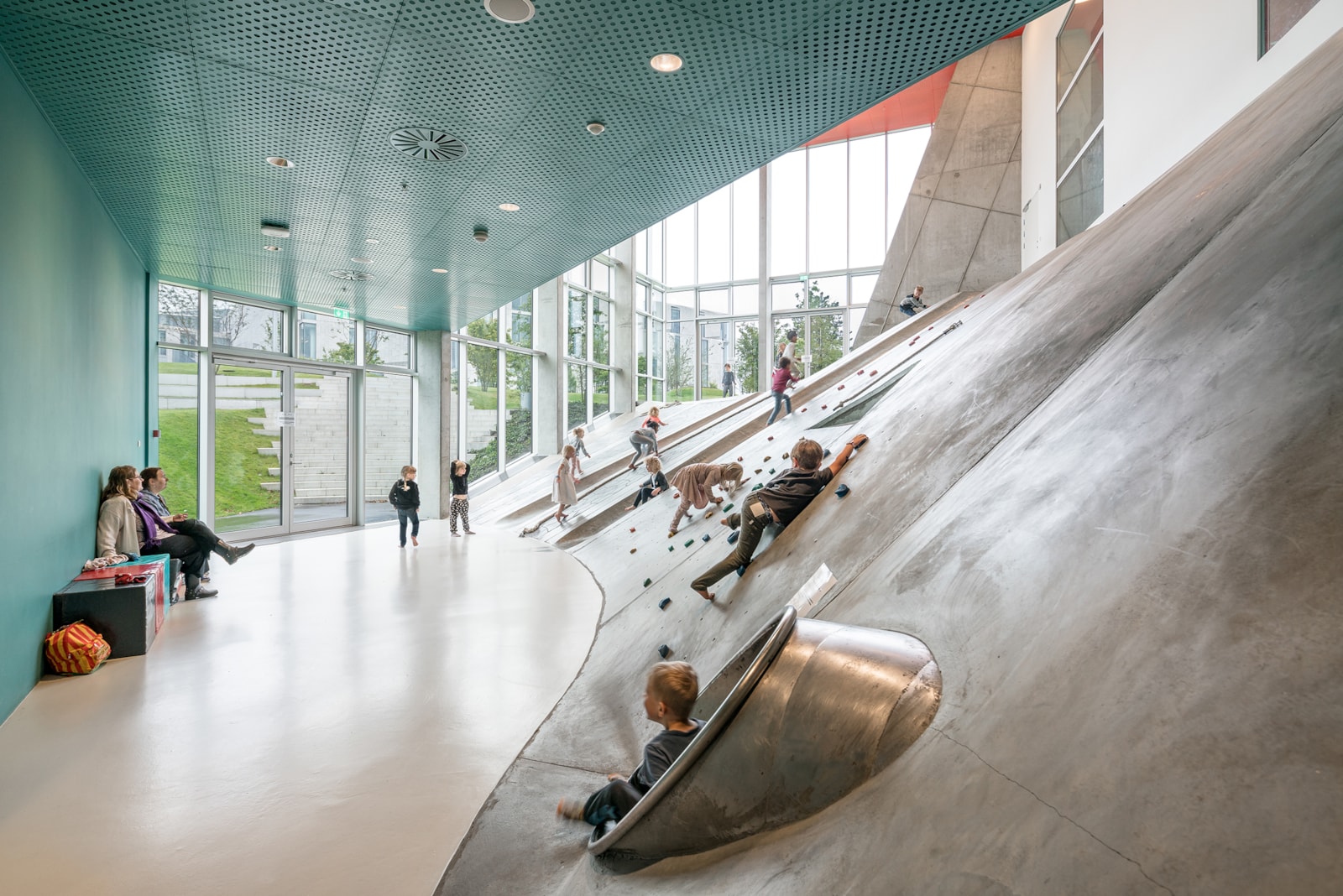Now more and more people are paying attention to the school structure and education of Asia. The EdDesign Mag team is also studying Eastern cases. We recently returned from a working trip to Singapore, where we visited three educational projects.
We found there large-area spaces, environmentally conscious design and construction. We observed architectural experiments, focus on unity with nature and training social skills through the environment. Read what else we found interesting in Singapore schools and campuses.
Dulwich College Singapore: 22 hectares of greenery and Victorian-style facade
Dulwich College in Singapore is part of an international network, the head college of which was founded in the Great Britain in the 17th century. Based on the English educational model, a network of institutions in Asia began to be created in 2014. The first thing that visitors to Dulwich College Singapore see is an unusual for Singapore brick, Victorian-style facade, which completely repeats the entry lobby of Dulwich College in England.
Photo: EdDesign Mag
The school is on a huge territory: the architectural bureau DP Architects Pte Ltd designed several separate buildings, grouping them around a football field as a unifying interior space. Dulwich College Singapore has quiet study areas and common rooms, three libraries, a bike path, a powerful art center and an assembly hall with an organ (!).
Photo: EdDesign Mag
The whole territory is literally surrounded by greenery. There are so many trees planted on a 5-hectare plot that the total leaf area is about 22 hectares. The consultants of the Greenology Pty Ltd project conducted workshops with the school teachers to develop a landscape environment that would correspond to the school curriculum and goals of the college. As a result, many classes can be held outdoors.
Children's Playgrounds without Rules: Overview of South Korea Cases
Open playgrounds, a playground for studying traffic rules are placed on the roofs of low units. The high school dining room is made in the food court format: students can choose from different national cuisines. There are also containers for collecting foodwaste, which is used to fertilize school plants. Also there are the scales on which you can weigh the school foodwaste.
Photo: EdDesign Mag
Dulwich College Singapore it is divided into three schools: DUCKS, Junior School and Senior School – and takes children from the age of 2 to 18. Teaching is in Chinese and English.
Eunoia Junior College: classes are near a park and a vertical campus
There are 1,250 children studying at Eunoia Junior College (EJC). The school area is impressive – 50,000 sq. m, but this is more the rule than the exception. Despite the fact that it is a small city-state, about 6 million people live here. Giant schools in Singapore have become a steady trend, the area of many schools exceeds 30,000 sq. m.
Photo: CPG, EdDesign Mag
The school plot allocated is relatively small – 4 hectares. To fit into such an area, architects from CPG Consultants design the campus vertically. The building complex includes two towers of 10 and 12 floors and a 5-storey sports complex. The project takes into account the specifics of the student schedule – navigation is designed so that the route from point A to point B takes no more than 12 minutes.
Photo: CPG, EdDesign Mag
Separate block of premises – tutorials – are intended for consultations with teachers. On the 1st and 2nd levels there is a dining room, a large hall, dance studios, a multifunctional hall for events. On the 9th and 10th floors there is a library and places for communication and collaboration.
EJC architecture is very restrained both in recreations and in classrooms. The white color is diluted with greenery and wood. This is the first school in Singapore to use CLT panels. The college’s floor panels are made of laminated veneer lumber. Use of these materials has helped to reduce the installation time of floor panels and facades during construction.
Photo: CPG, EdDesign Mag
The school is located in the Bishan-Ang Mo Kio Park, and the architects tried to include it in the project: the dining room and the central square of the EJC ‘flow’ into the park. This space has become an extension of the learning environment and a place for active recreation.
Eunoia Junior College – pre-university, students learn here from the age of 16 to 18. Singapore is famous for its academic education, and EJC is one of the top schools. Each student has his own set of subjects for in-depth study; the day begins with a streaming lecture for 100–200 people, as in a university.
Learning Hub Hive: characterized by concrete facades and bamboo steamer as a source of inspiration
A beehive or a bamboo steamer for dim sum, it was from these images that the architect Thomas Heatherwick started when he designed the Learning Hub Hive for the Institute of Technology in Singapore.
Photo: Hufton+Crow, Heatherwick Studio
This is not a faculty building or an academic unit in its purest form, but rather a public building open to everyone, where you can book a studio, hold a project seminar or discussion, and drink a cup of coffee. This multifunctional building can accommodate 33,000 students. The training center designed by CPG Consultants architects, has become a new educational place worth seeing in Singapore and a point of attraction for the entire campus.
Photo: Hufton+Crow, Heatherwick Studio, EdDesign Mag
Singapore’s building standards and the customer’s environmental requirements made the project team to build from concrete and to find a solution to make this material beautiful. To create a complex texture, the facade panels were cast in special silicone molds and processed. As a result, it seems that the whole project was made by hand from clay. The stairs and walls of Hive are decorated with drawings by British artist Sara Fanelli – these are images of art, science and literature.
56 studios – tutoring rooms are built in twelve dim sum towers. They open onto a central atrium with garden terraces. The area of each subsequent floor is wider than the previous one. By this technique, a natural blackout is provided for the lower floors, and a slightly mysterious atmosphere is created inside, as if we were in a forest where the tree crowns throw a shadow. The building is fully open, there is no glazing, except for the upper light lamp.
Photo: Hufton+Crow
The temperature in Singapore ranges from 25 °C to 31 °C all year round, so it was necessary to think out the building ventilation, which could maintain comfortable conditions for studying. The permeable atrium of the building is naturally ventilated. Enclosed premises are cooled by noiseless convection, that’s why there is no need to install energy-intensive fans or air conditioners.
April 2023

